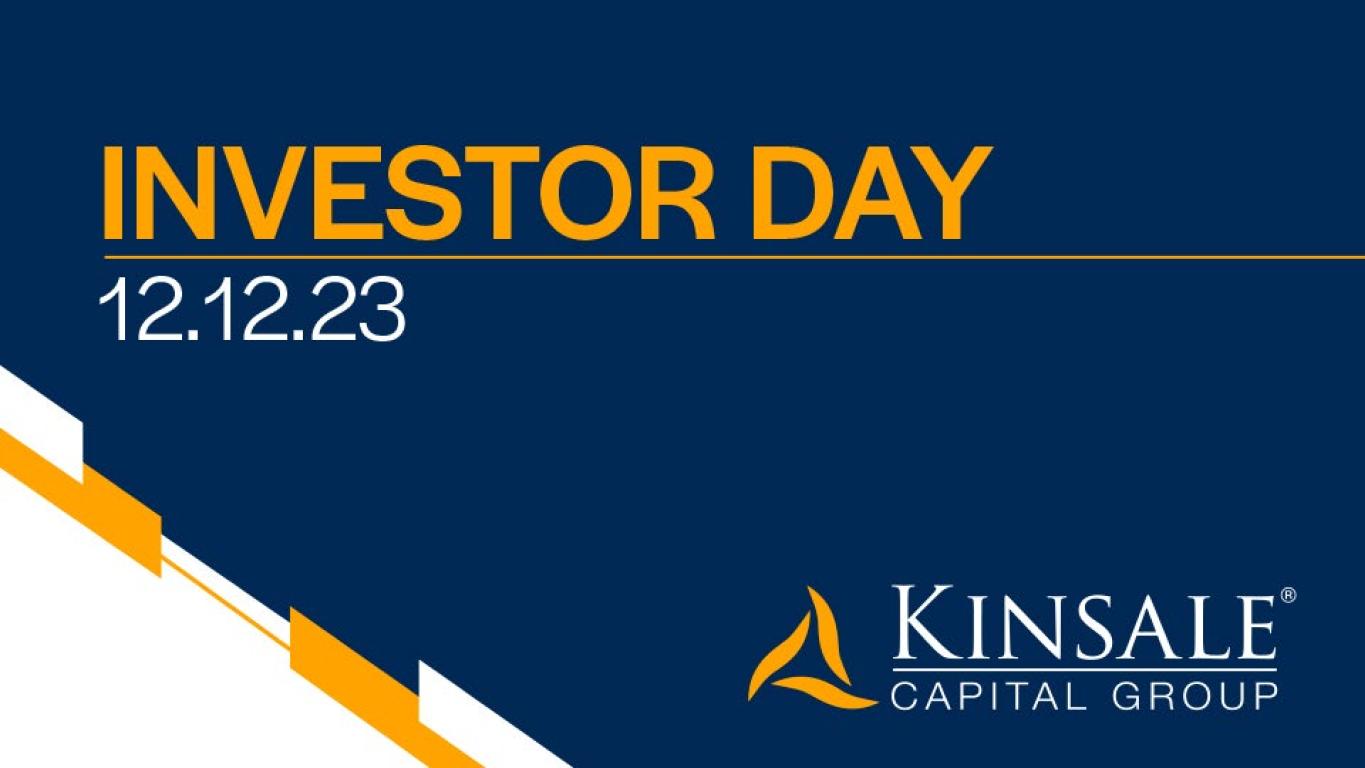
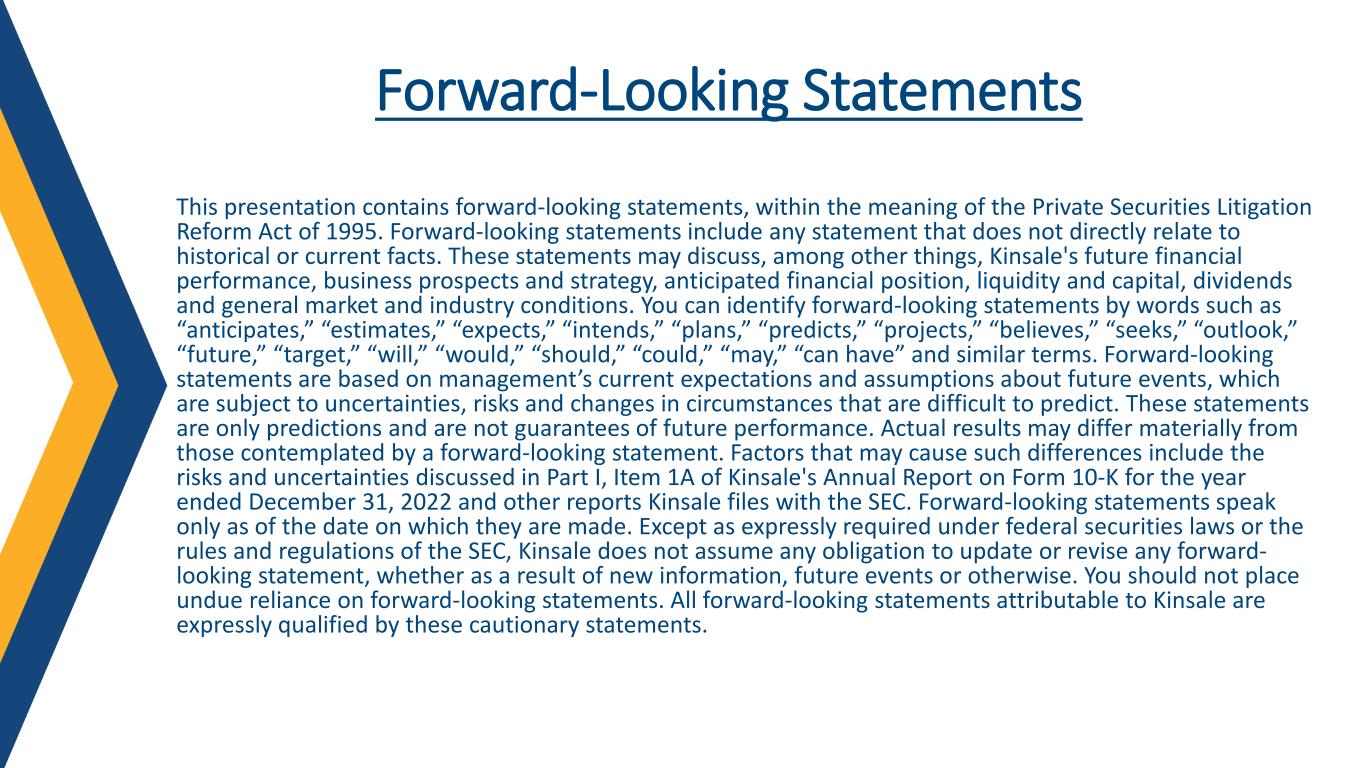
Forward-Looking Statements This presentation contains forward-looking statements, within the meaning of the Private Securities Litigation Reform Act of 1995. Forward-looking statements include any statement that does not directly relate to historical or current facts. These statements may discuss, among other things, Kinsale's future financial performance, business prospects and strategy, anticipated financial position, liquidity and capital, dividends and general market and industry conditions. You can identify forward-looking statements by words such as “anticipates,” “estimates,” “expects,” “intends,” “plans,” “predicts,” “projects,” “believes,” “seeks,” “outlook,” “future,” “target,” “will,” “would,” “should,” “could,” “may,” “can have” and similar terms. Forward-looking statements are based on management’s current expectations and assumptions about future events, which are subject to uncertainties, risks and changes in circumstances that are difficult to predict. These statements are only predictions and are not guarantees of future performance. Actual results may differ materially from those contemplated by a forward-looking statement. Factors that may cause such differences include the risks and uncertainties discussed in Part I, Item 1A of Kinsale's Annual Report on Form 10-K for the year ended December 31, 2022 and other reports Kinsale files with the SEC. Forward-looking statements speak only as of the date on which they are made. Except as expressly required under federal securities laws or the rules and regulations of the SEC, Kinsale does not assume any obligation to update or revise any forward- looking statement, whether as a result of new information, future events or otherwise. You should not place undue reliance on forward-looking statements. All forward-looking statements attributable to Kinsale are expressly qualified by these cautionary statements.
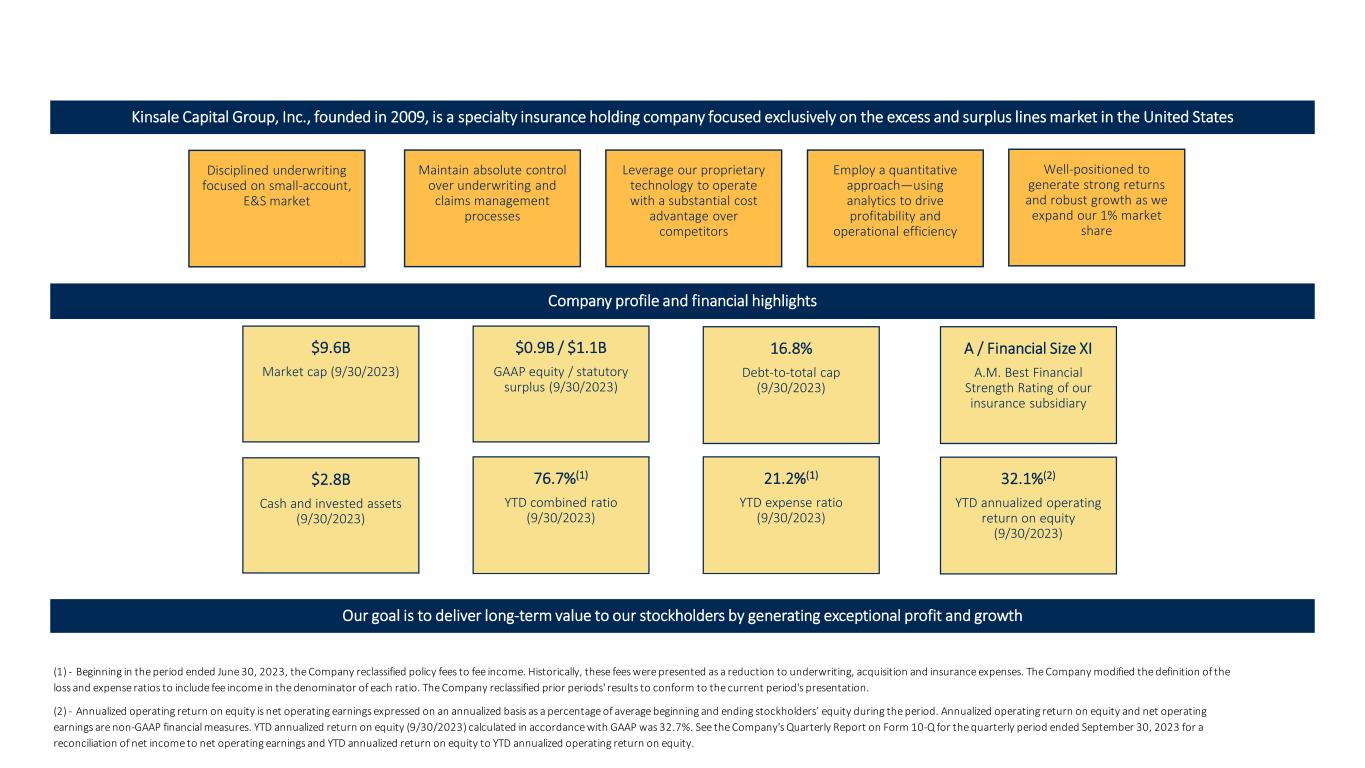
Kinsale Capital Group, Inc., founded in 2009, is a specialty insurance holding company focused exclusively on the excess and surplus lines market in the United States Disciplined underwriting focused on small-account, E&S market Maintain absolute control over underwriting and claims management processes Leverage our proprietary technology to operate with a substantial cost advantage over competitors Employ a quantitative approach—using analytics to drive profitability and operational efficiency Well-positioned to generate strong returns and robust growth as we expand our 1% market share Our goal is to deliver long-term value to our stockholders by generating exceptional profit and growth Company profile and financial highlights $9.6B Market cap (9/30/2023) $0.9B / $1.1B GAAP equity / statutory surplus (9/30/2023) 16.8% Debt-to-total cap (9/30/2023) A / Financial Size XI A.M. Best Financial Strength Rating of our insurance subsidiary 32.1%(2) YTD annualized operating return on equity (9/30/2023) 76.7%(1) YTD combined ratio (9/30/2023) $2.8B Cash and invested assets (9/30/2023) 21.2%(1) YTD expense ratio (9/30/2023) (1) - Beginning in the period ended June 30, 2023, the Company reclassified policy fees to fee income. Historically, these fees were presented as a reduction to underwriting, acquisition and insurance expenses. The Company modified the definition of the loss and expense ratios to include fee income in the denominator of each ratio. The Company reclassified prior periods' results to conform to the current period's presentation. (2) - Annualized operating return on equity is net operating earnings expressed on an annualized basis as a percentage of average beginning and ending stockholders’ equity during the period. Annualized operating return on equity and net operating earnings are non-GAAP financial measures. YTD annualized return on equity (9/30/2023) calculated in accordance with GAAP was 32.7%. See the Company's Quarterly Report on Form 10-Q for the quarterly period ended September 30, 2023 for a reconciliation of net income to net operating earnings and YTD annualized return on equity to YTD annualized operating return on equity.
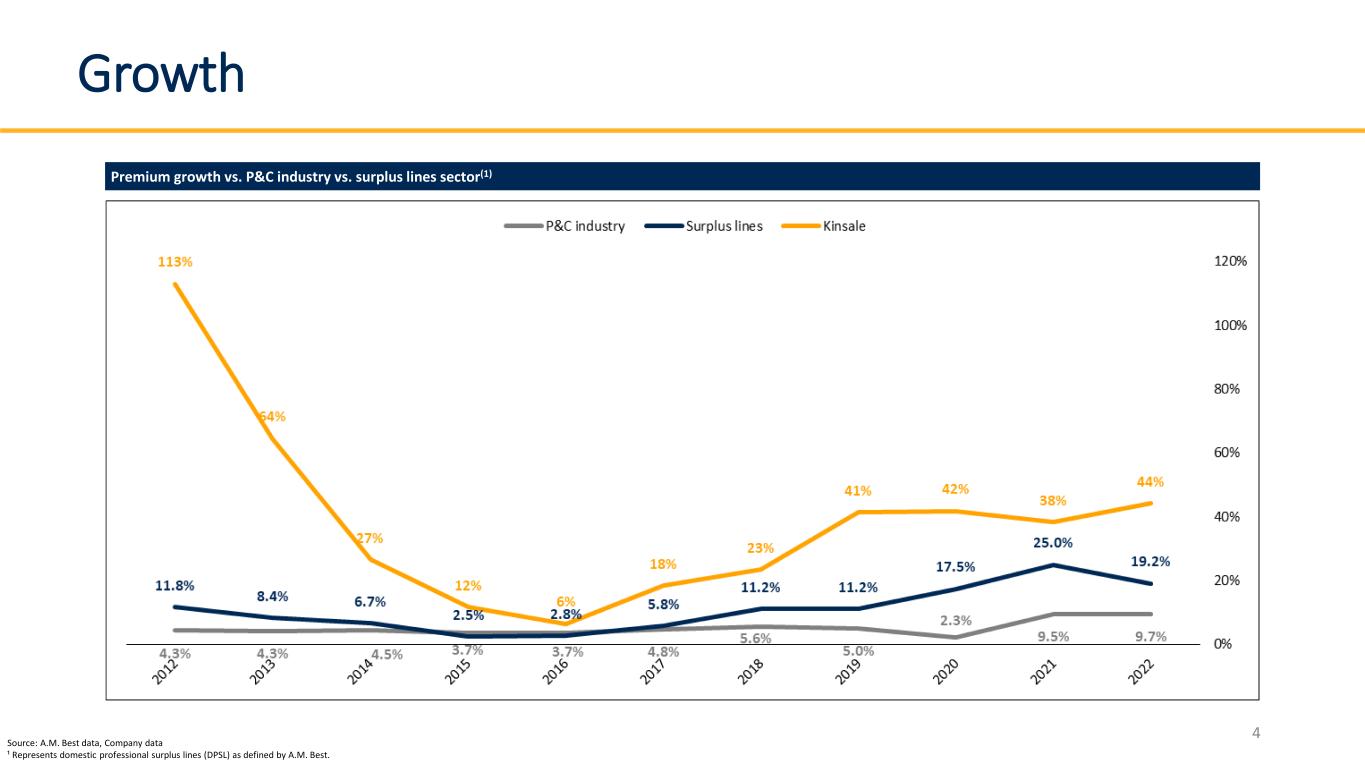
Growth Source: A.M. Best data, Company data ¹ Represents domestic professional surplus lines (DPSL) as defined by A.M. Best. 4 Premium growth vs. P&C industry vs. surplus lines sector(1)
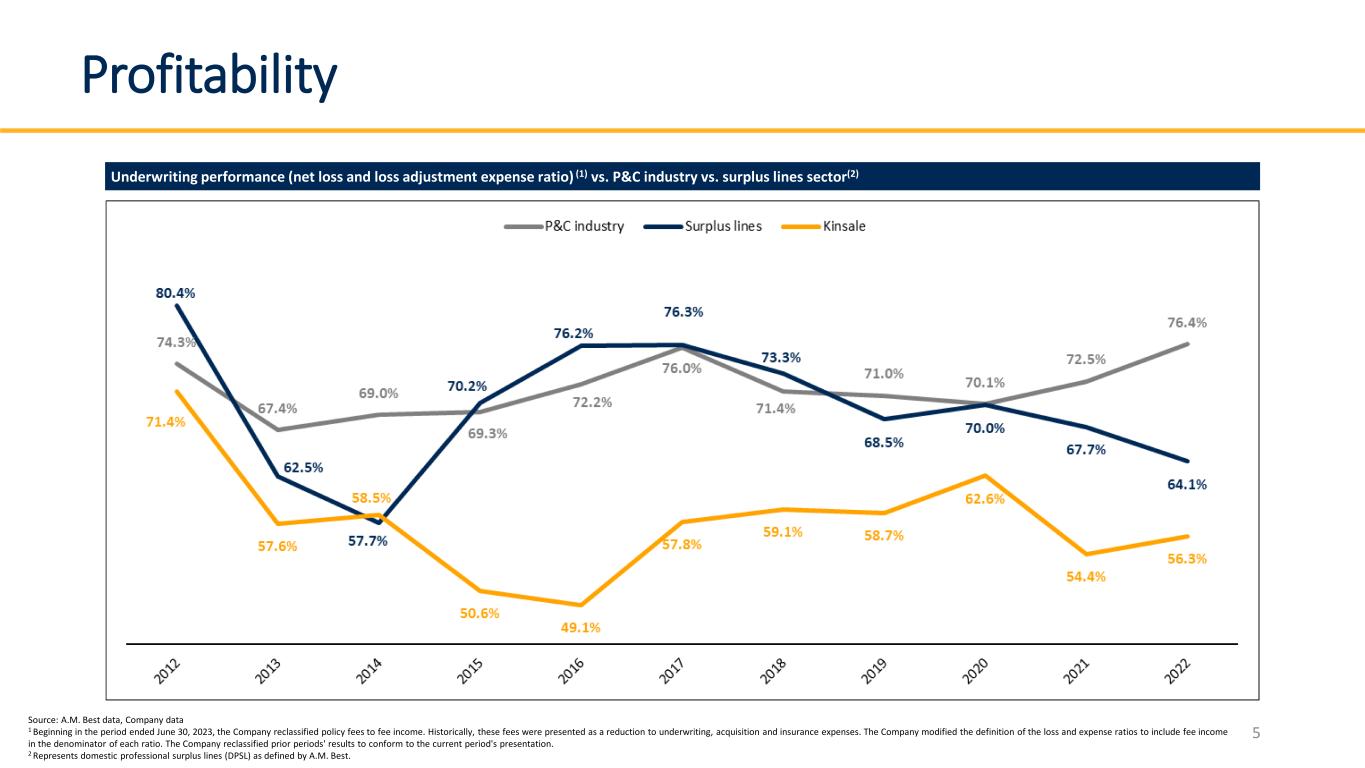
5 Profitability Underwriting performance (net loss and loss adjustment expense ratio) (1) vs. P&C industry vs. surplus lines sector(2) Source: A.M. Best data, Company data 1 Beginning in the period ended June 30, 2023, the Company reclassified policy fees to fee income. Historically, these fees were presented as a reduction to underwriting, acquisition and insurance expenses. The Company modified the definition of the loss and expense ratios to include fee income in the denominator of each ratio. The Company reclassified prior periods' results to conform to the current period's presentation. 2 Represents domestic professional surplus lines (DPSL) as defined by A.M. Best.
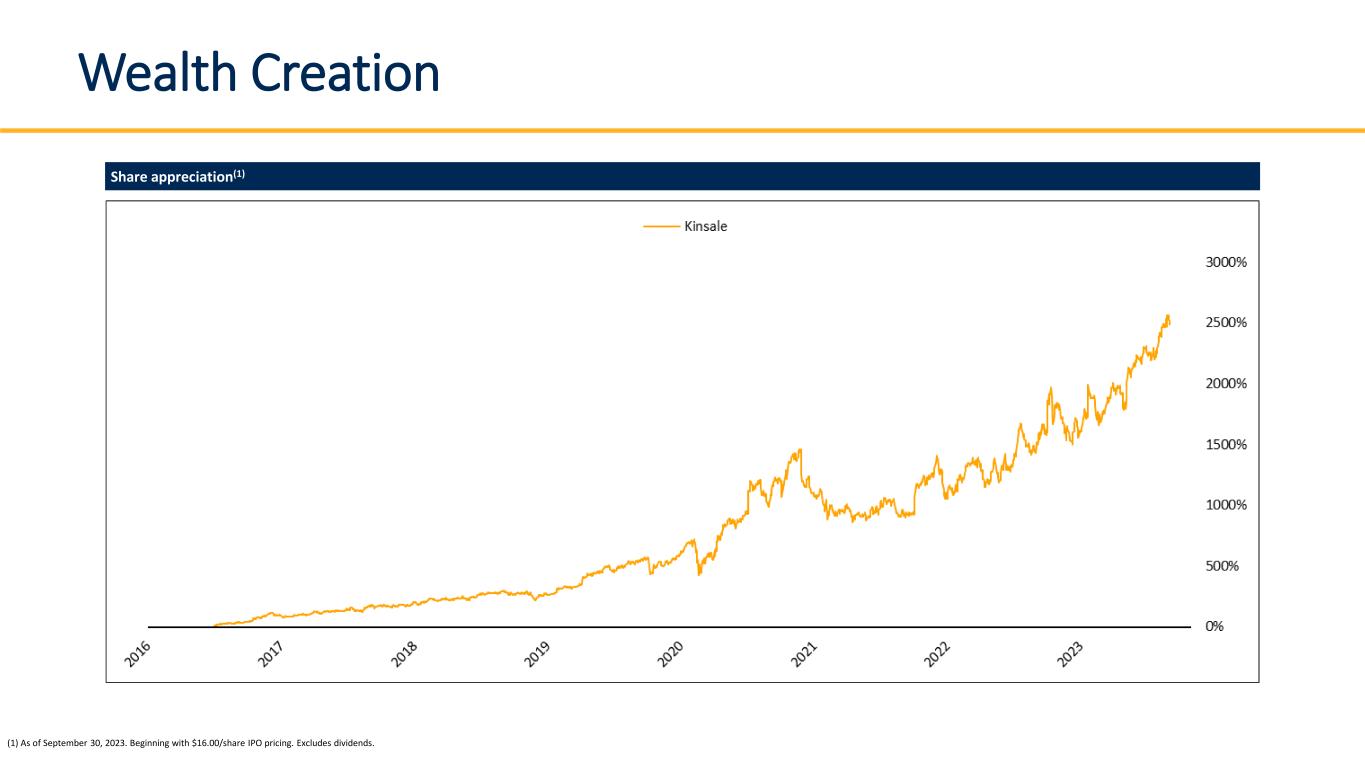
Wealth Creation (1) As of September 30, 2023. Beginning with $16.00/share IPO pricing. Excludes dividends. Share appreciation(1)

UNDERWRITING
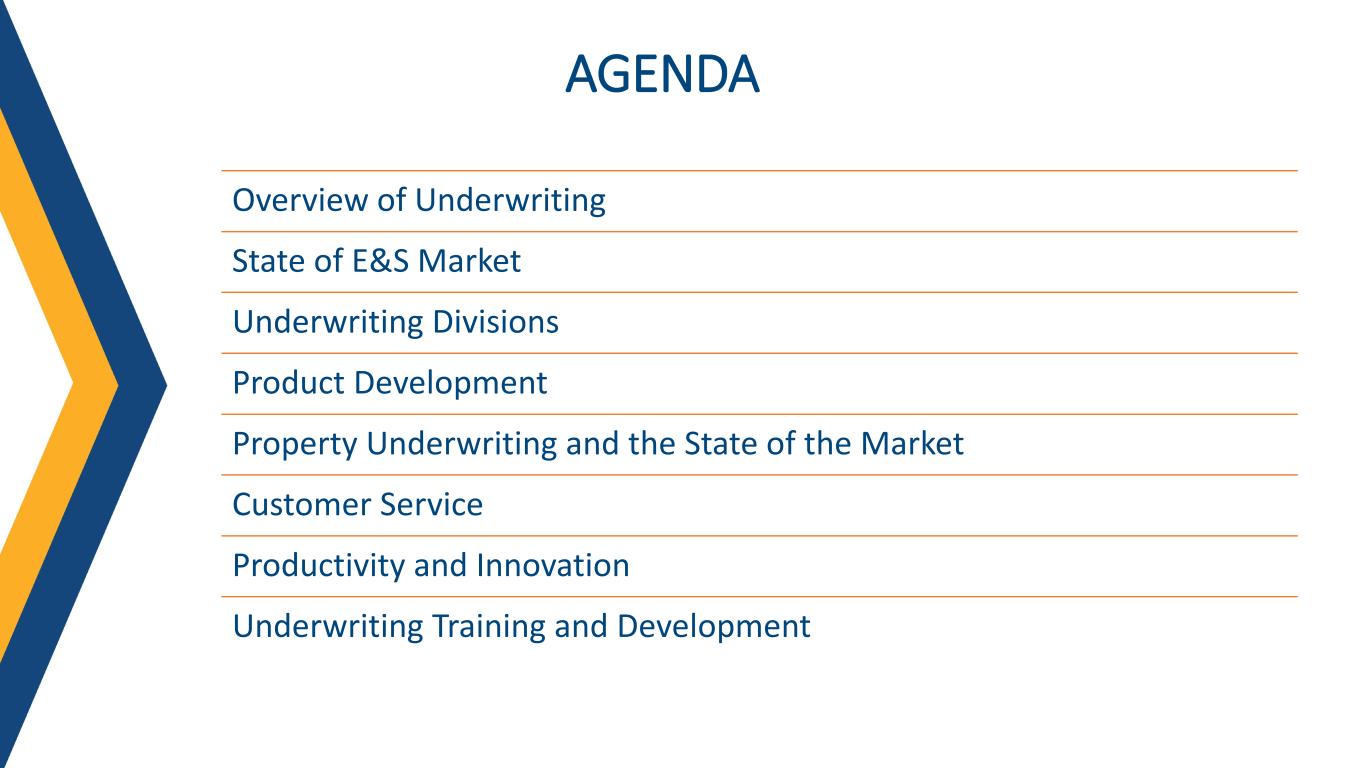
AGENDA Overview of Underwriting State of E&S Market Underwriting Divisions Product Development Property Underwriting and the State of the Market Customer Service Productivity and Innovation Underwriting Training and Development
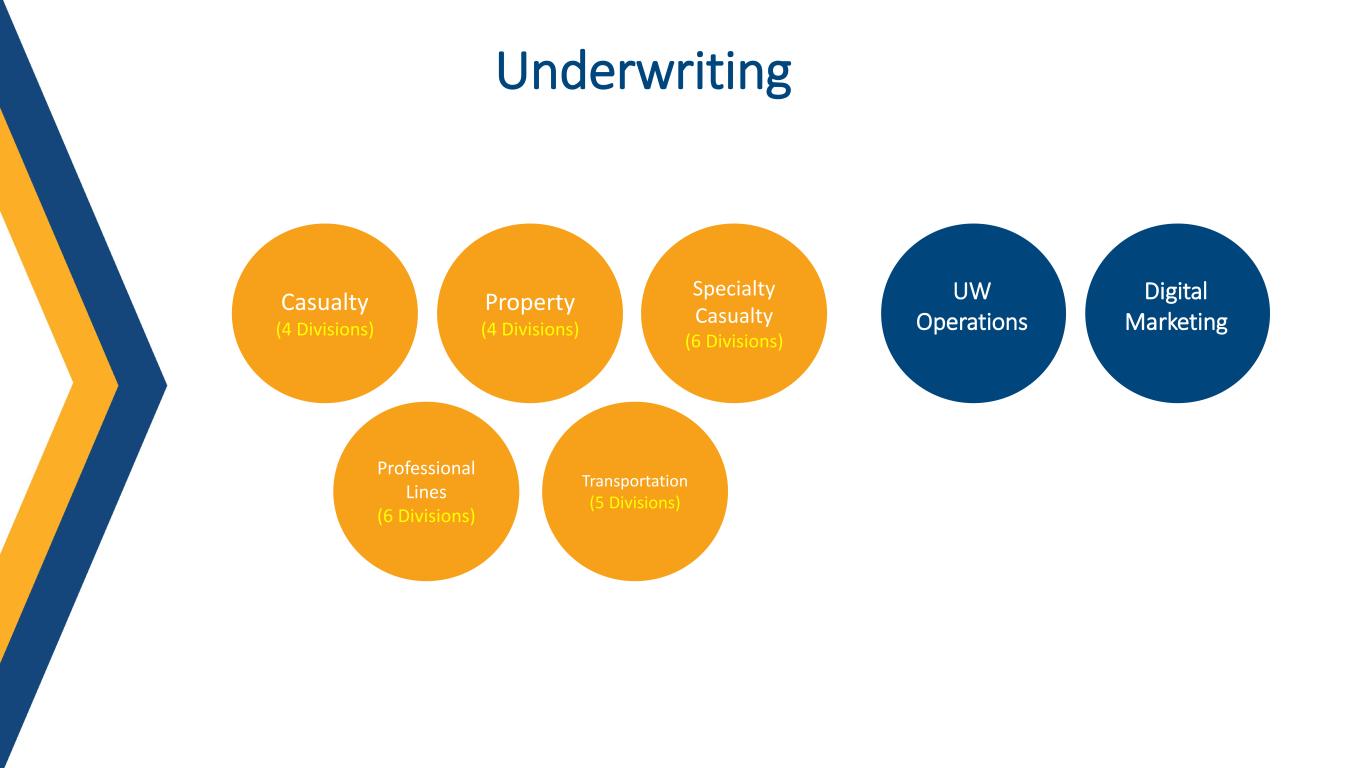
Life Sciences Environmental Underwriting Casualty (4 Divisions) Specialty Casualty (6 Divisions) Professional Lines (6 Divisions) UW Operations Digital Marketing Transportation (5 Divisions) Property (4 Divisions)
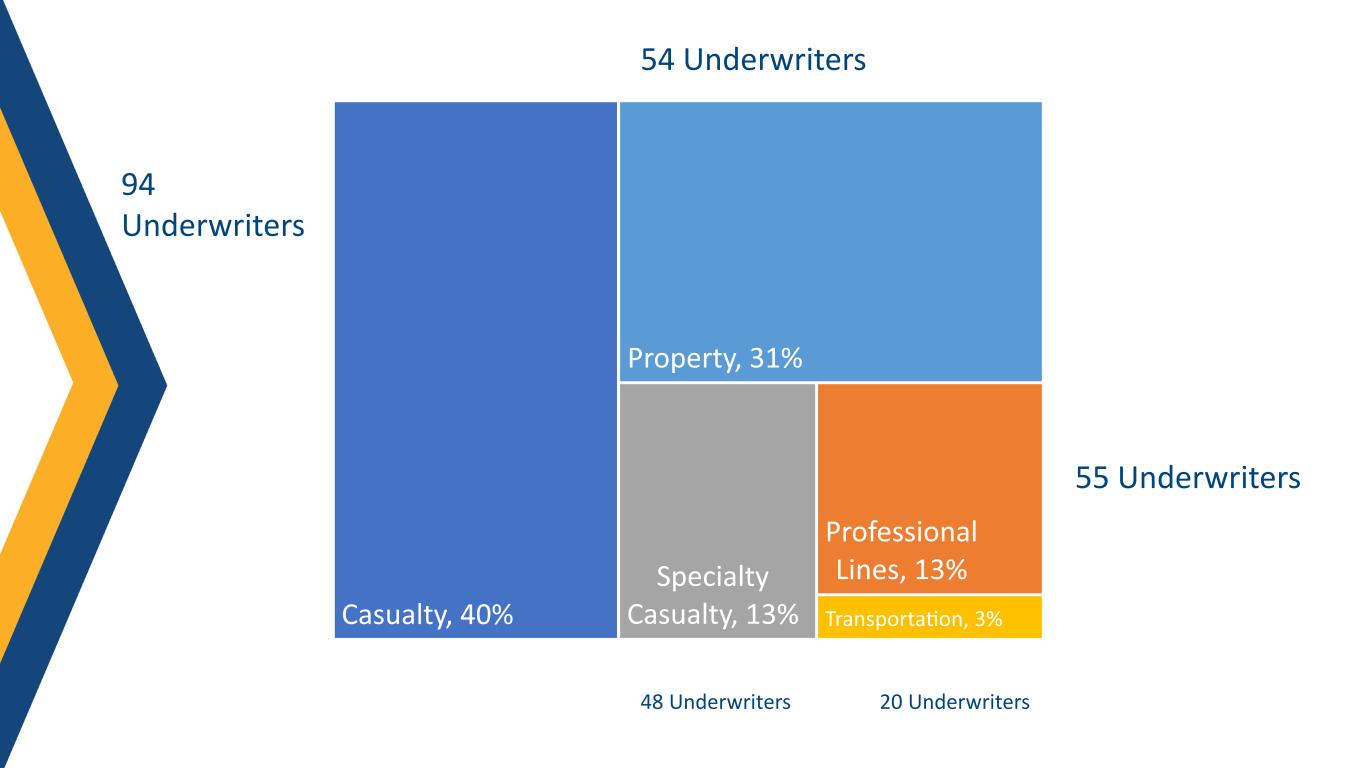
94 Underwriters 54 Underwriters 55 Underwriters 48 Underwriters 20 Underwriters
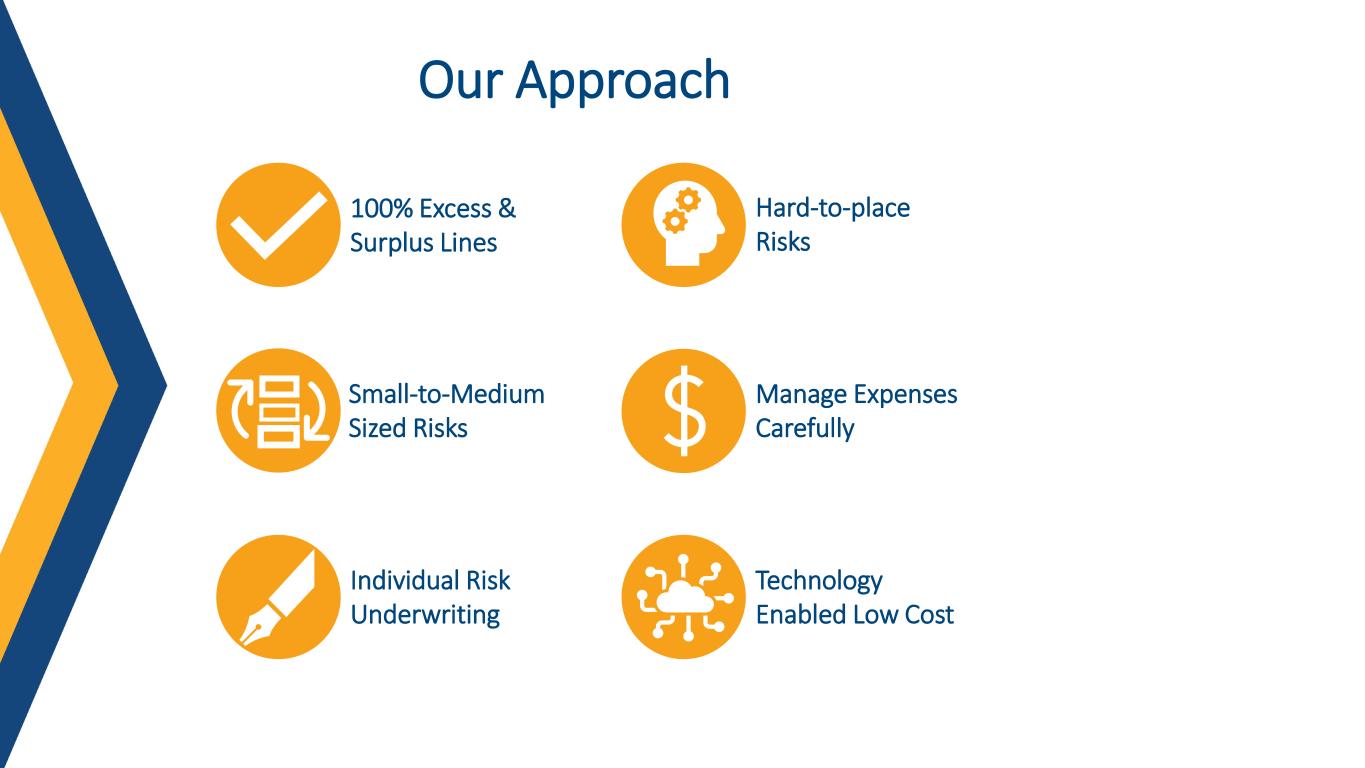
Our Approach 100% Excess & Surplus Lines Small-to-Medium Sized Risks Individual Risk Underwriting Technology Enabled Low Cost Manage Expenses Carefully Hard-to-place Risks
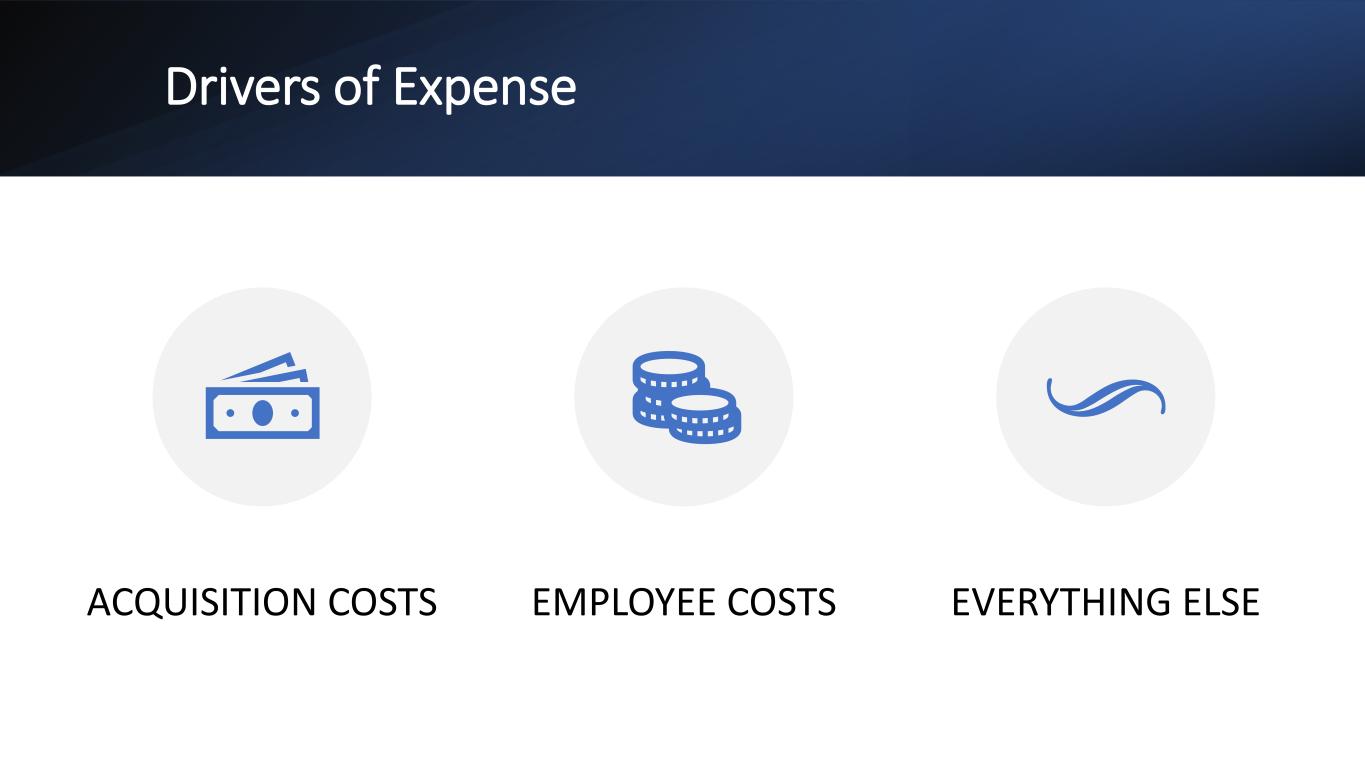
Drivers of Expense ACQUISITION COSTS EMPLOYEE COSTS EVERYTHING ELSE
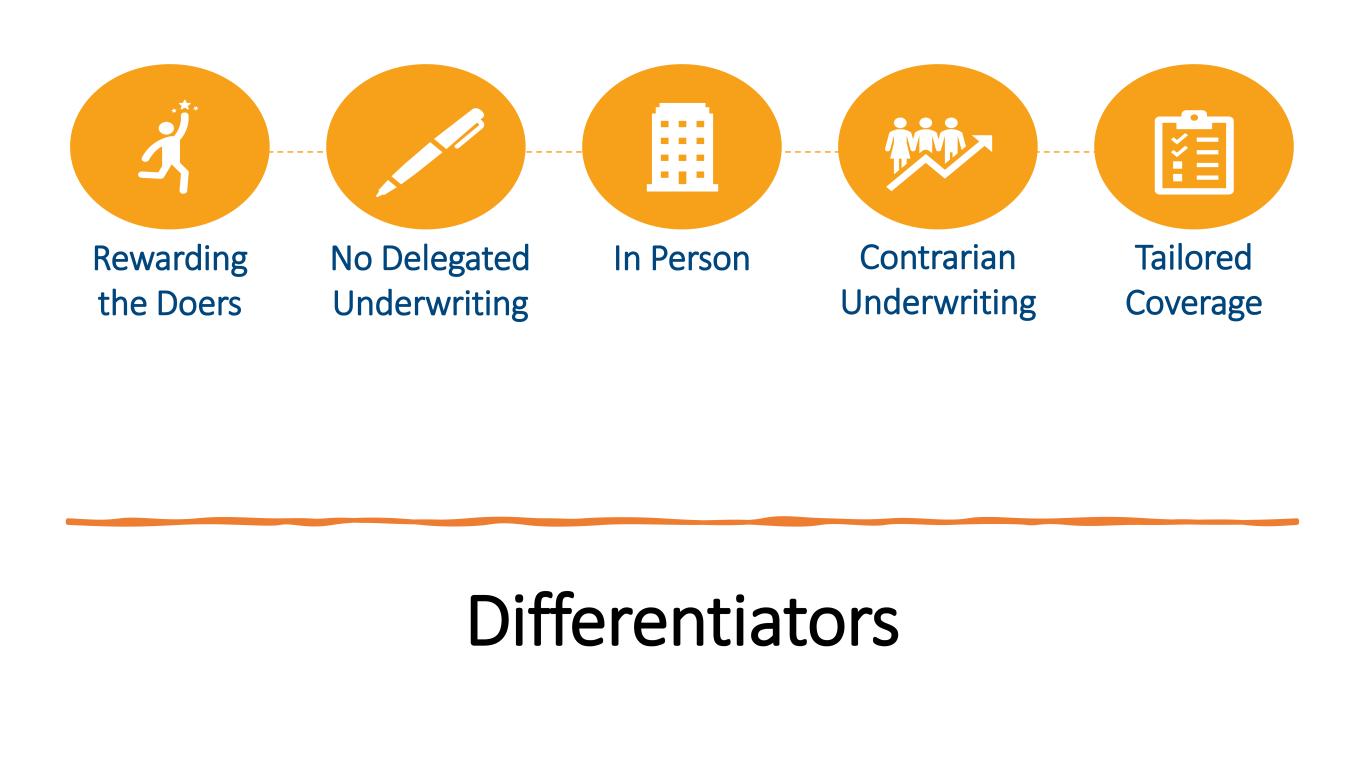
Differentiators Rewarding the Doers No Delegated Underwriting In Person Contrarian Underwriting Tailored Coverage
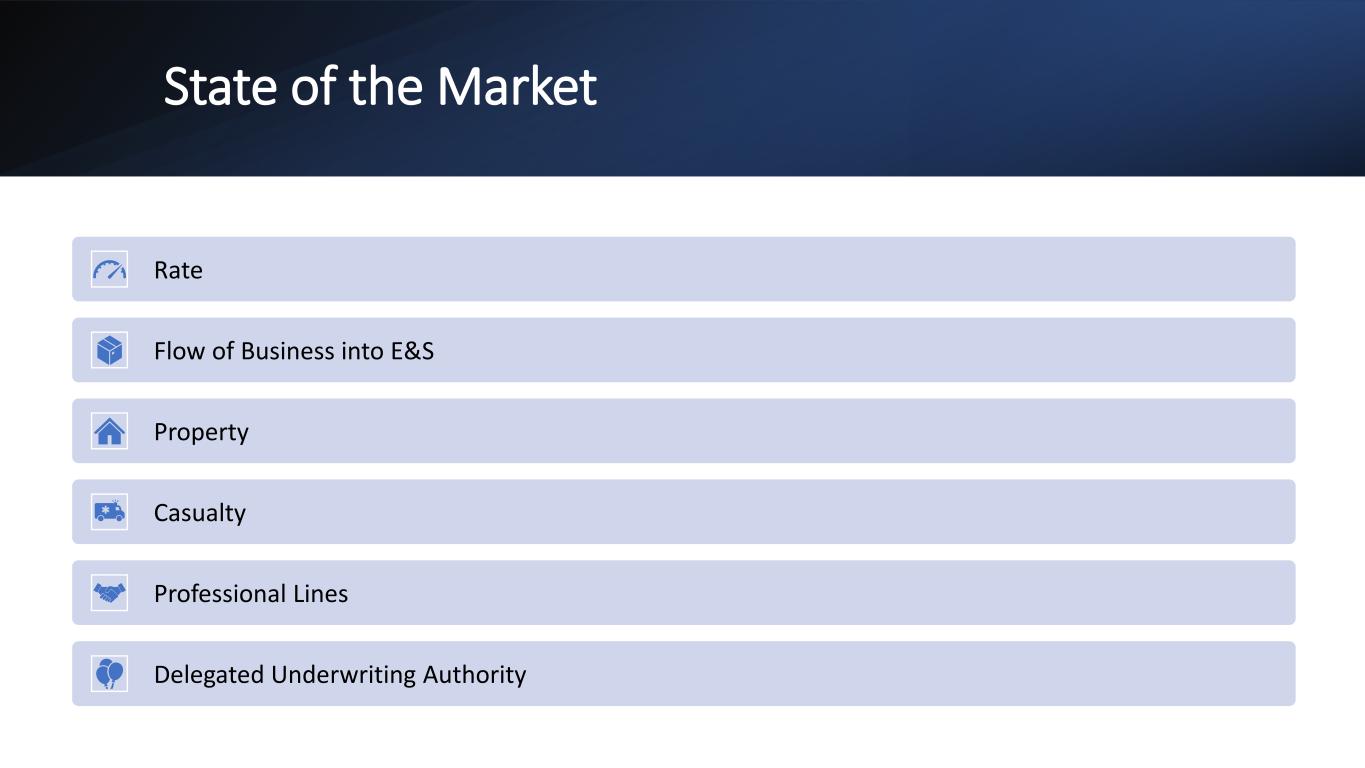
State of the Market Rate Flow of Business into E&S Property Casualty Professional Lines Delegated Underwriting Authority
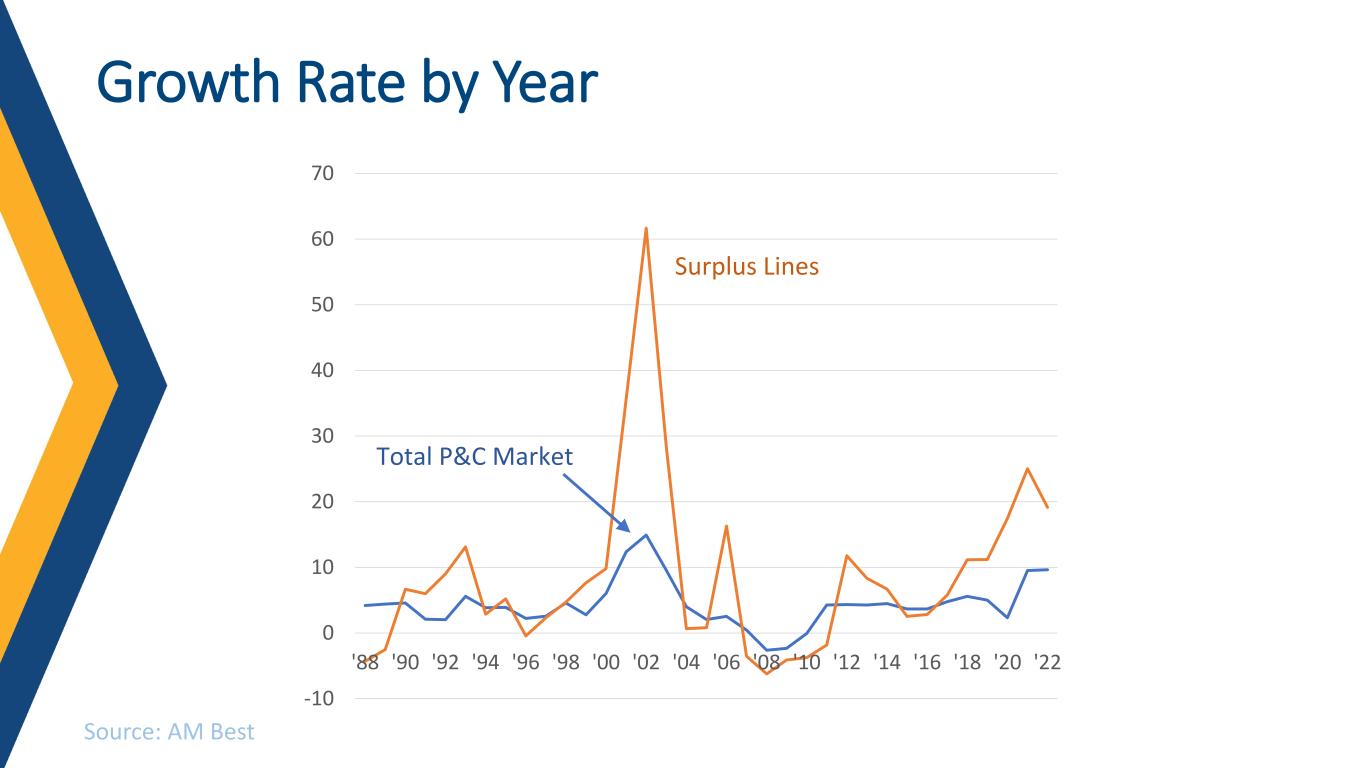
Growth Rate by Year -10 0 10 20 30 40 50 60 70 '88 '90 '92 '94 '96 '98 '00 '02 '04 '06 '08 '10 '12 '14 '16 '18 '20 '22 Surplus Lines Total P&C Market Source: AM Best
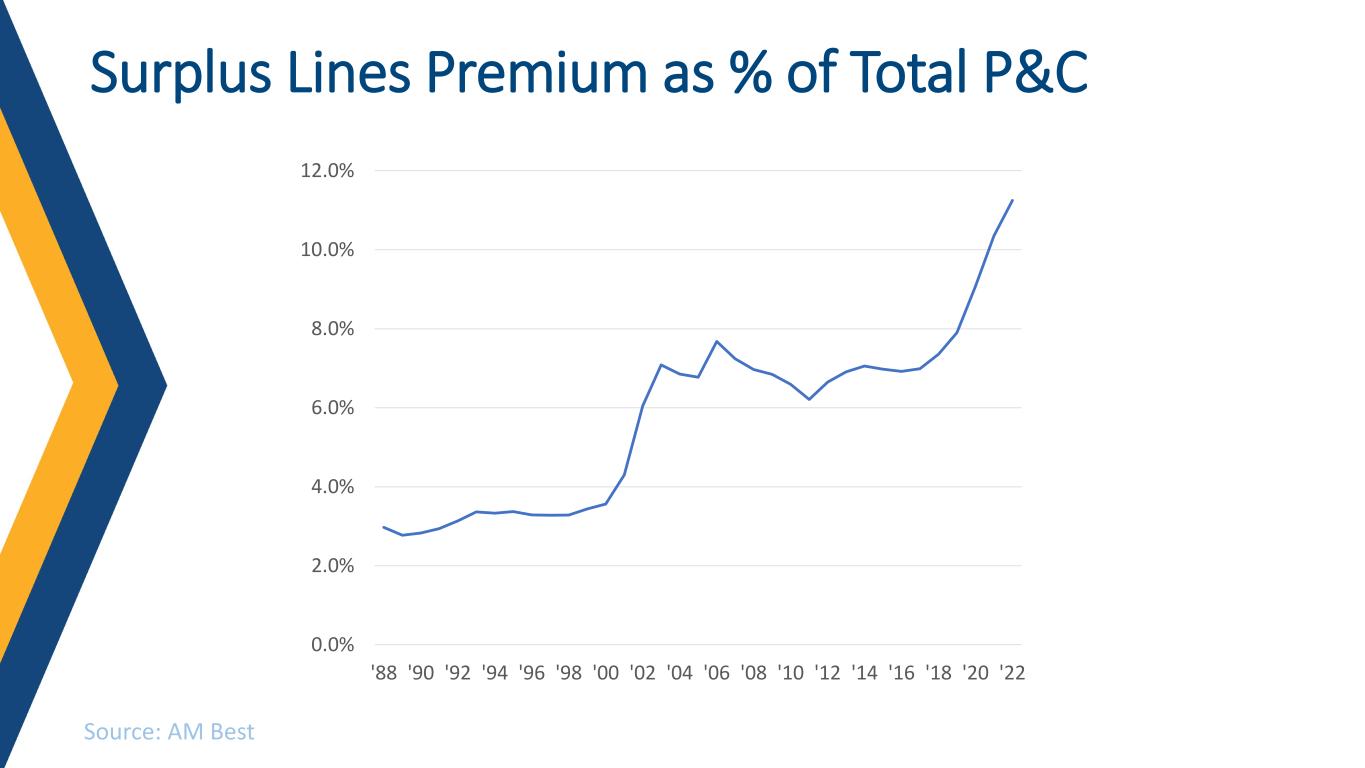
Surplus Lines Premium as % of Total P&C Source: AM Best 0.0% 2.0% 4.0% 6.0% 8.0% 10.0% 12.0% '88 '90 '92 '94 '96 '98 '00 '02 '04 '06 '08 '10 '12 '14 '16 '18 '20 '22
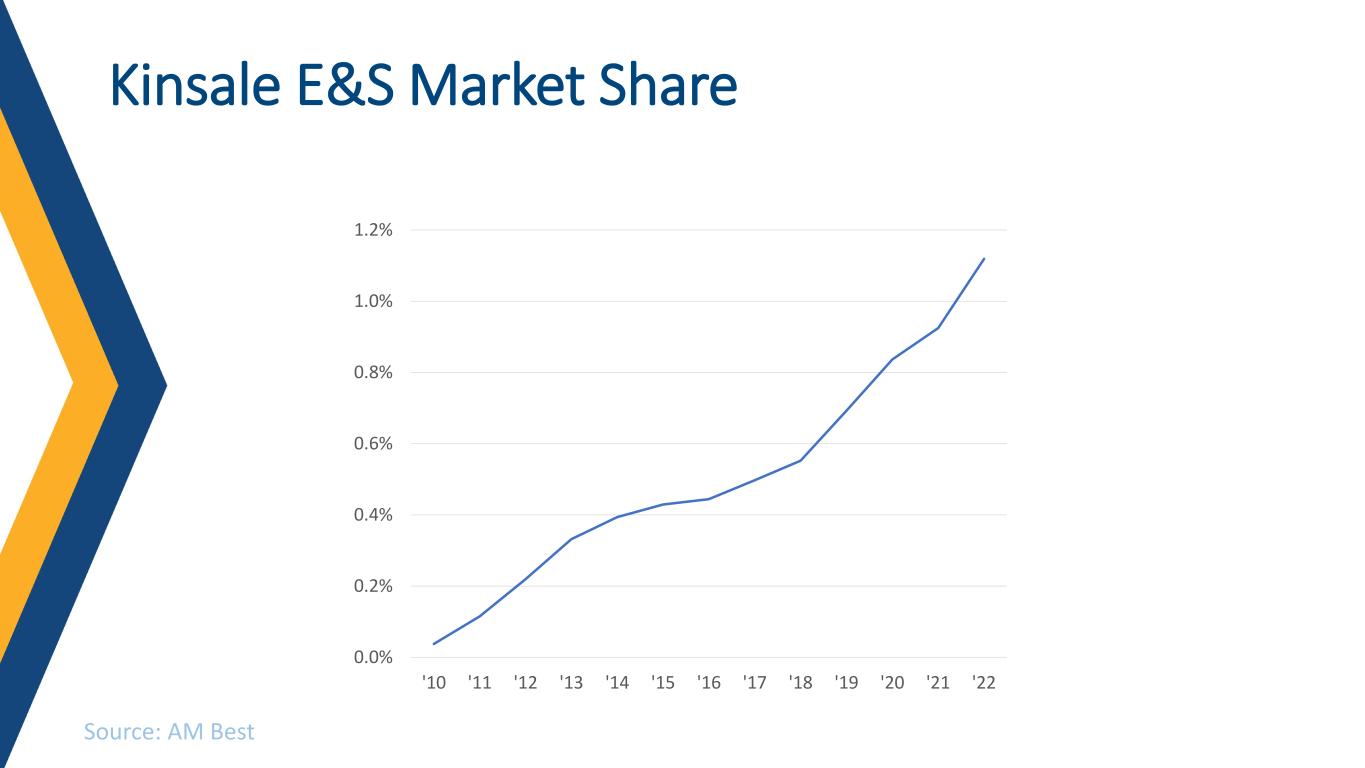
Kinsale E&S Market Share 0.0% 0.2% 0.4% 0.6% 0.8% 1.0% 1.2% '10 '11 '12 '13 '14 '15 '16 '17 '18 '19 '20 '21 '22 Source: AM Best
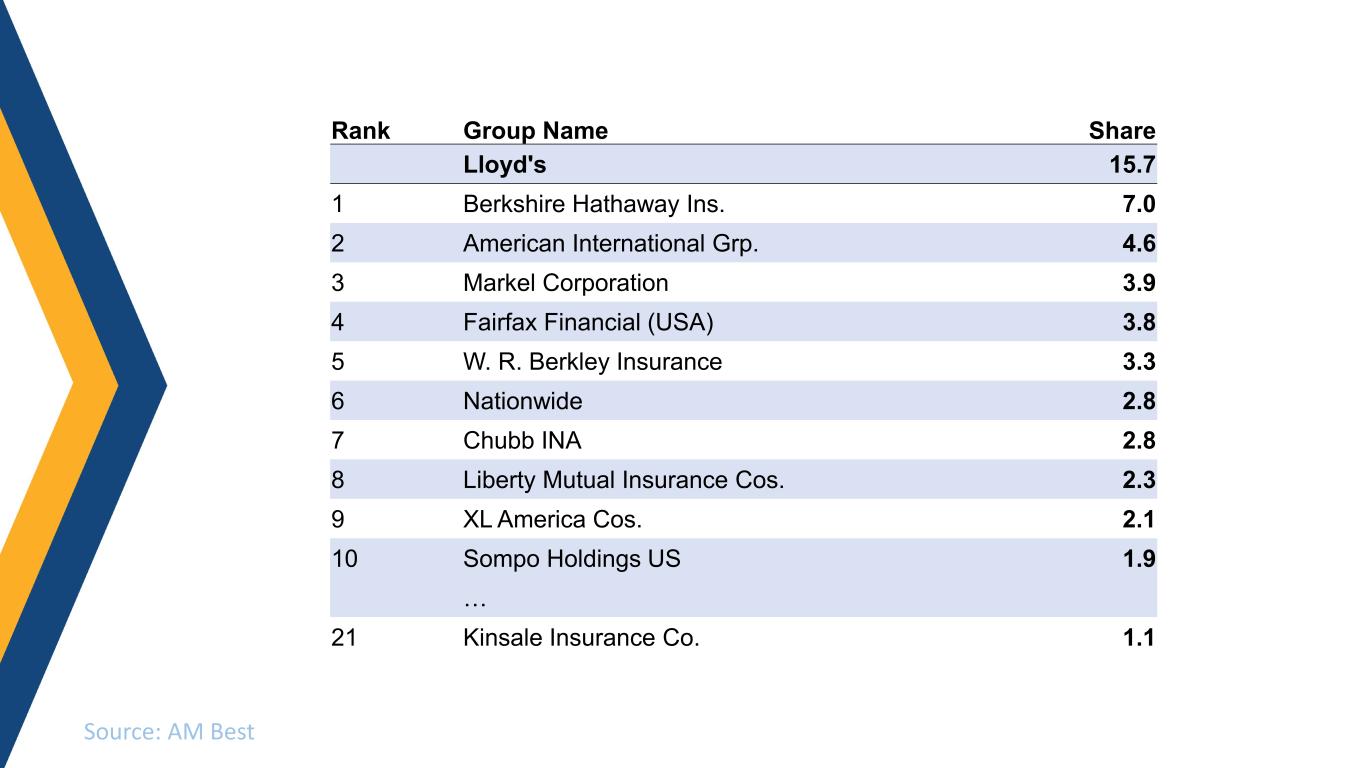
Source: AM Best Rank Group Name Share Lloyd's 15.7 1 Berkshire Hathaway Ins. 7.0 2 American International Grp. 4.6 3 Markel Corporation 3.9 4 Fairfax Financial (USA) 3.8 5 W. R. Berkley Insurance 3.3 6 Nationwide 2.8 7 Chubb INA 2.8 8 Liberty Mutual Insurance Cos. 2.3 9 XL America Cos. 2.1 10 Sompo Holdings US 1.9 … 21 Kinsale Insurance Co. 1.1
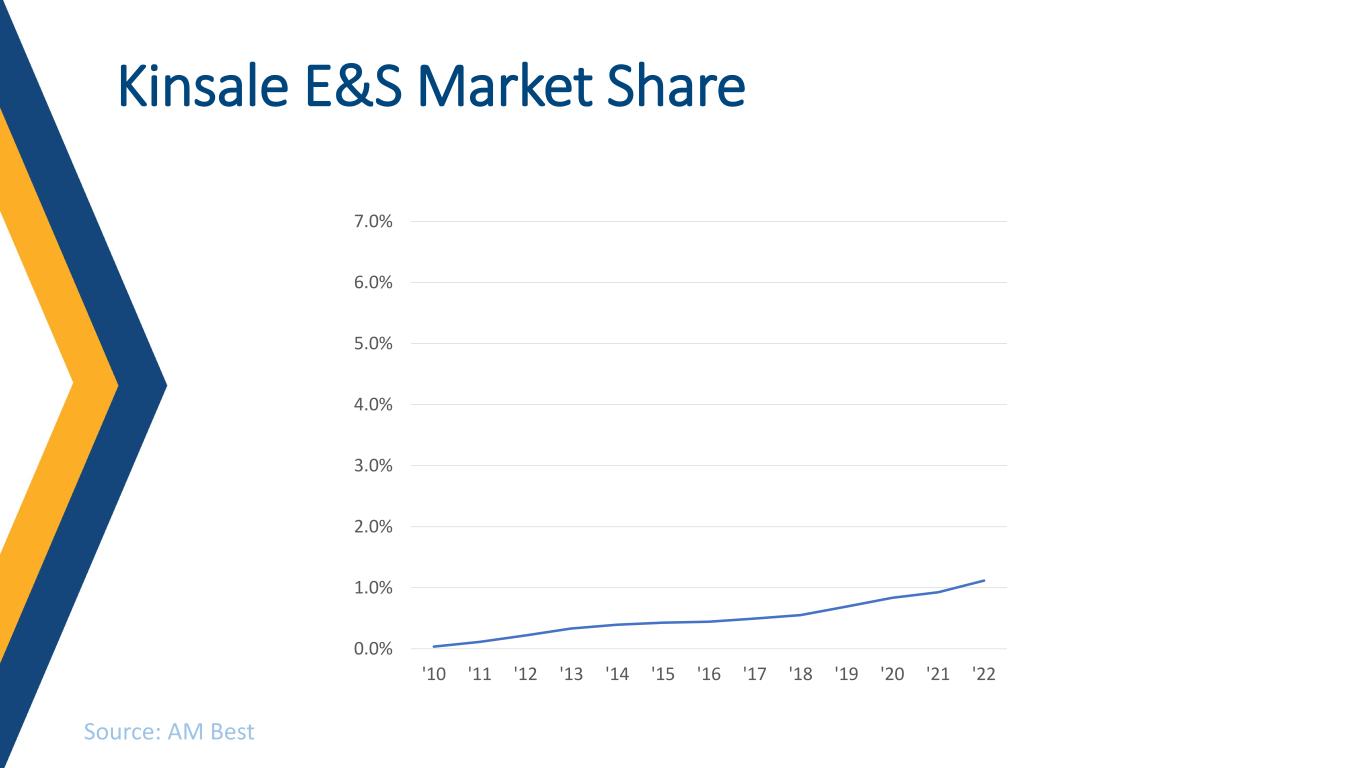
Kinsale E&S Market Share 0.0% 1.0% 2.0% 3.0% 4.0% 5.0% 6.0% 7.0% '10 '11 '12 '13 '14 '15 '16 '17 '18 '19 '20 '21 '22 Source: AM Best
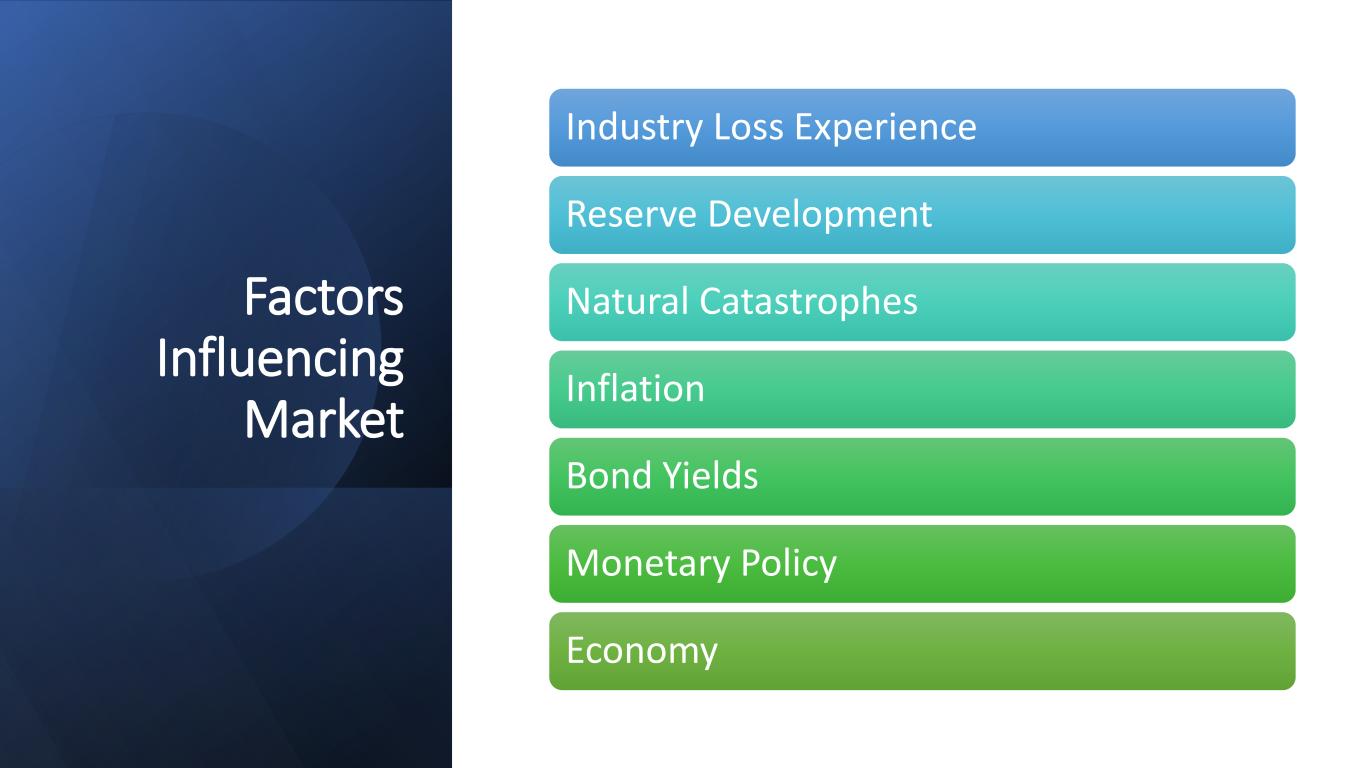
Factors Influencing Market Industry Loss Experience Reserve Development Natural Catastrophes Inflation Bond Yields Monetary Policy Economy
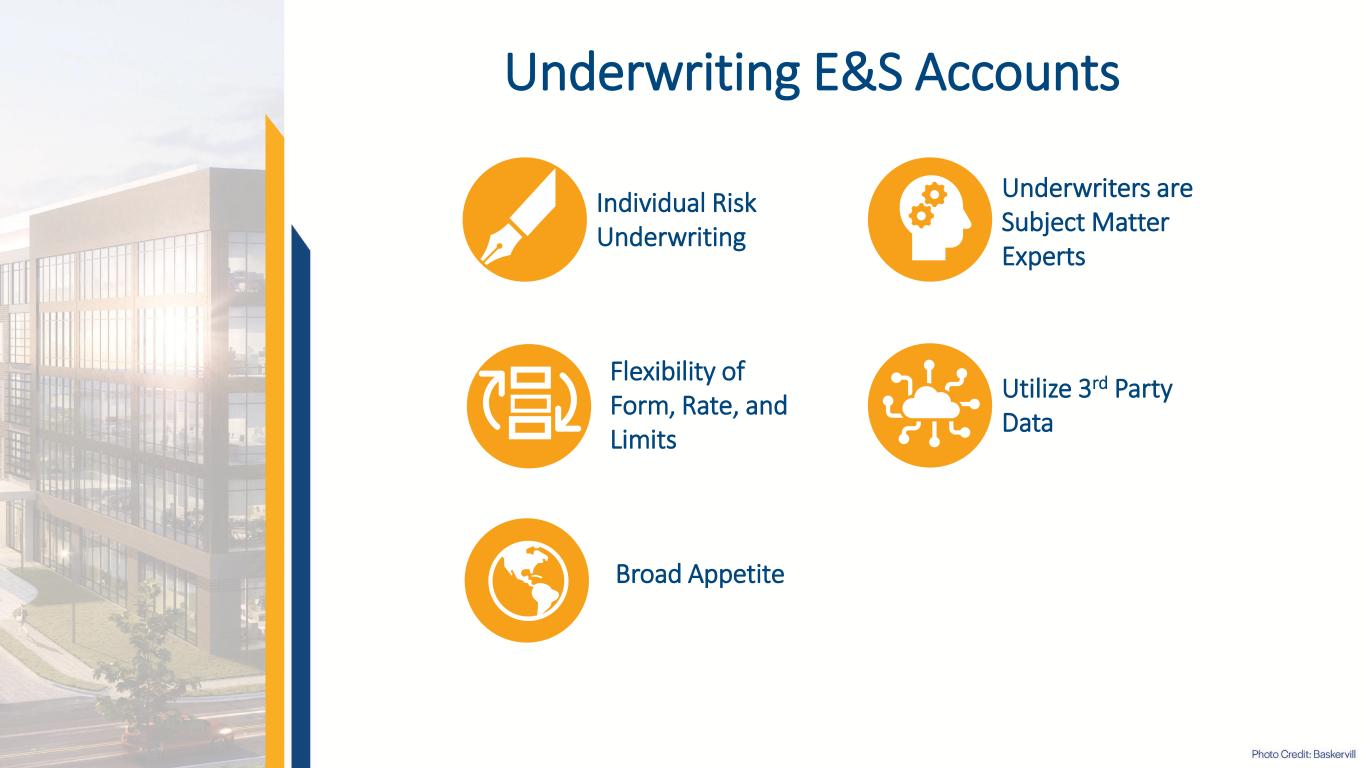
Underwriting E&S Accounts Individual Risk Underwriting Utilize 3rd Party Data Underwriters are Subject Matter Experts Flexibility of Form, Rate, and Limits Broad Appetite
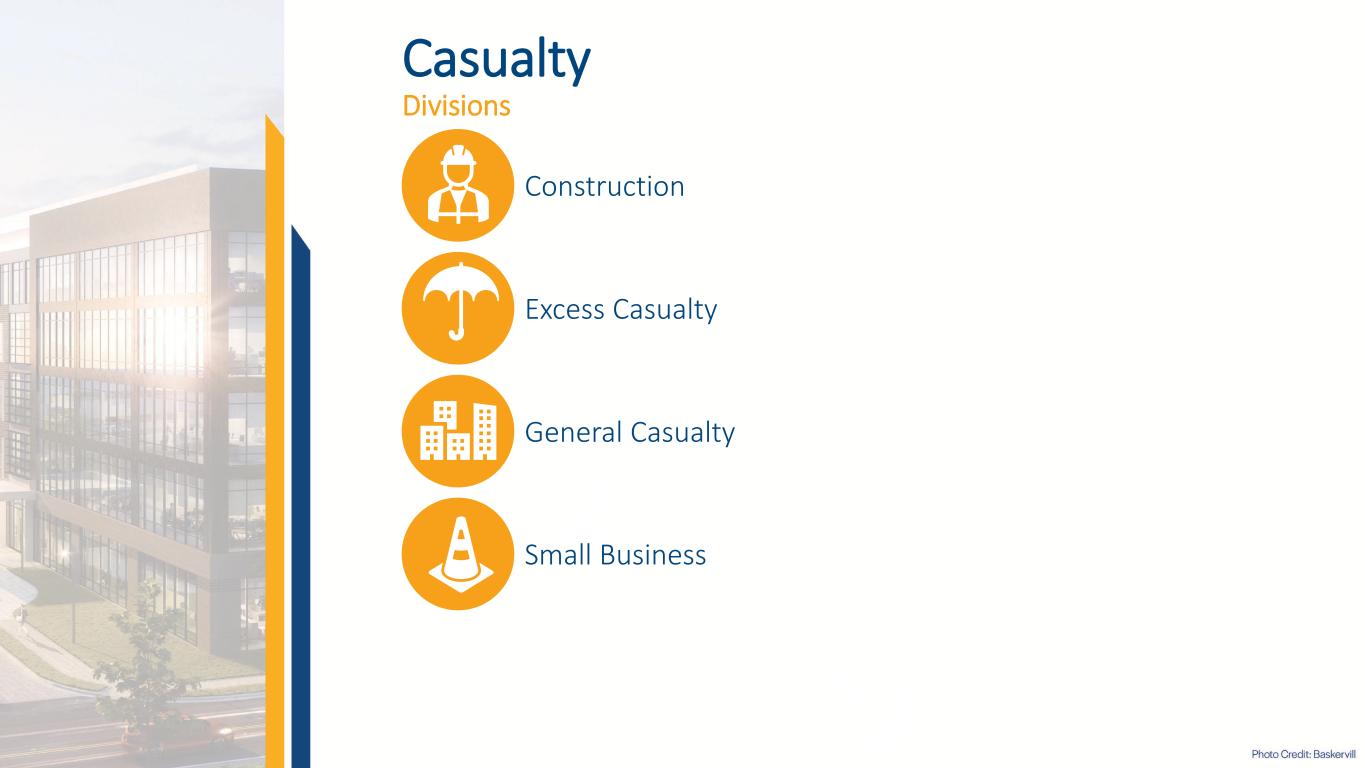
Casualty Divisions Small Business General Casualty Excess Casualty Construction
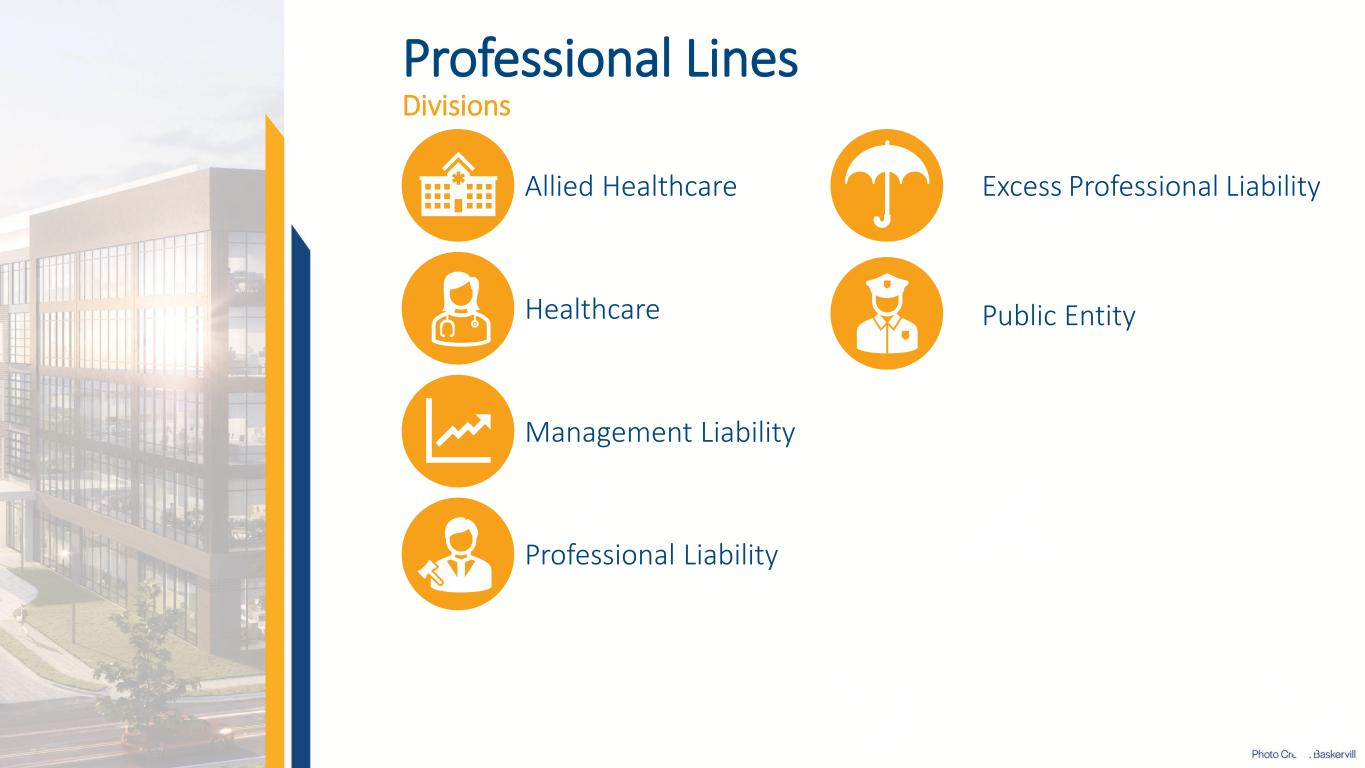
Professional Lines Divisions Public Entity Professional Liability Management Liability Healthcare Allied Healthcare Excess Professional Liability
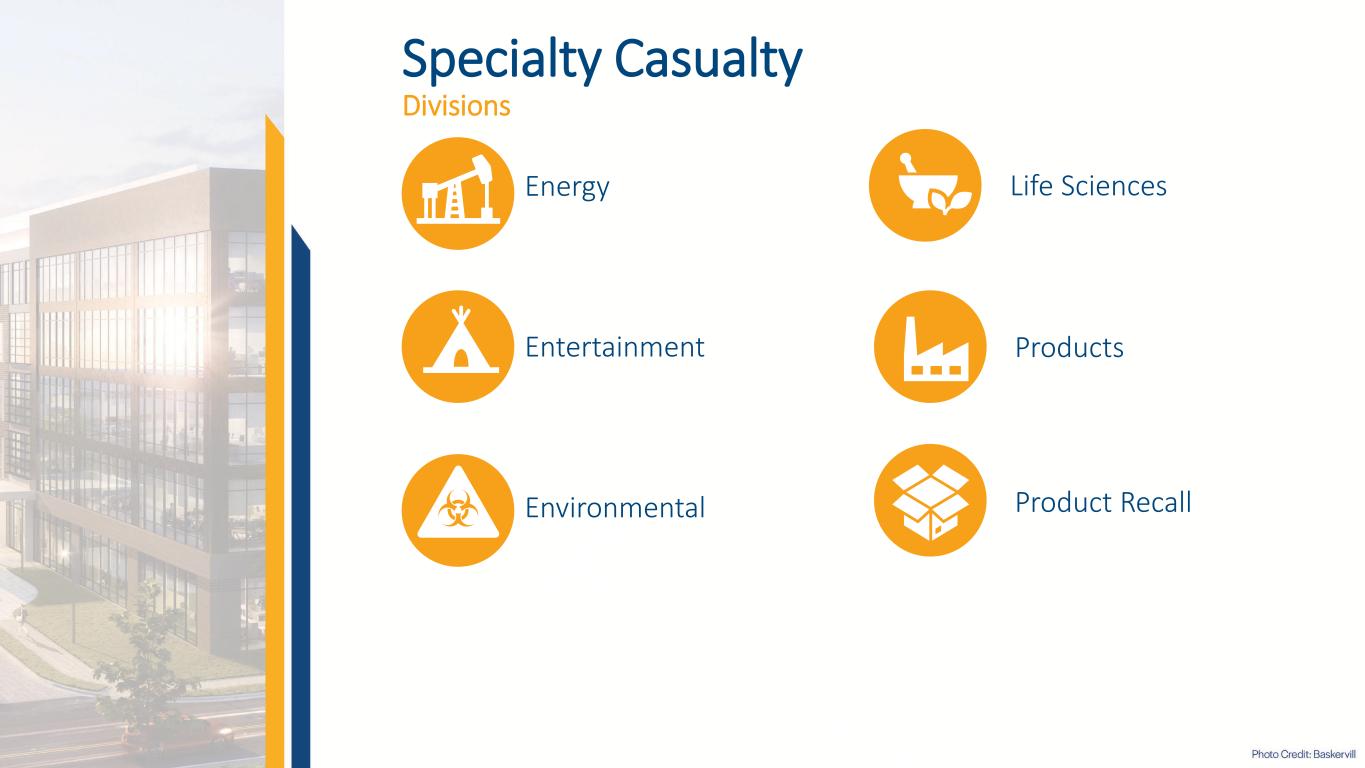
Specialty Casualty Divisions Environmental Entertainment Energy Life Sciences Products Product Recall
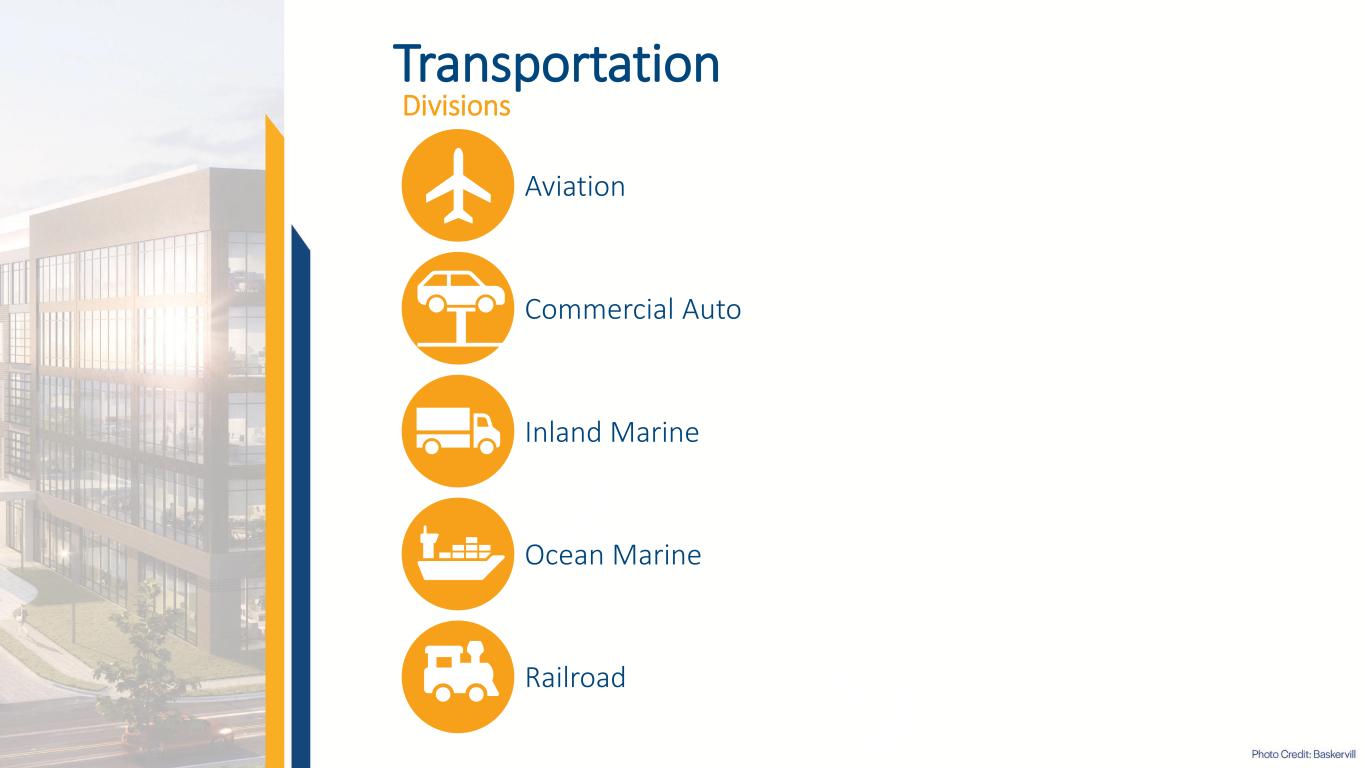
Transportation Divisions Ocean Marine Inland Marine Commercial Auto Aviation Railroad
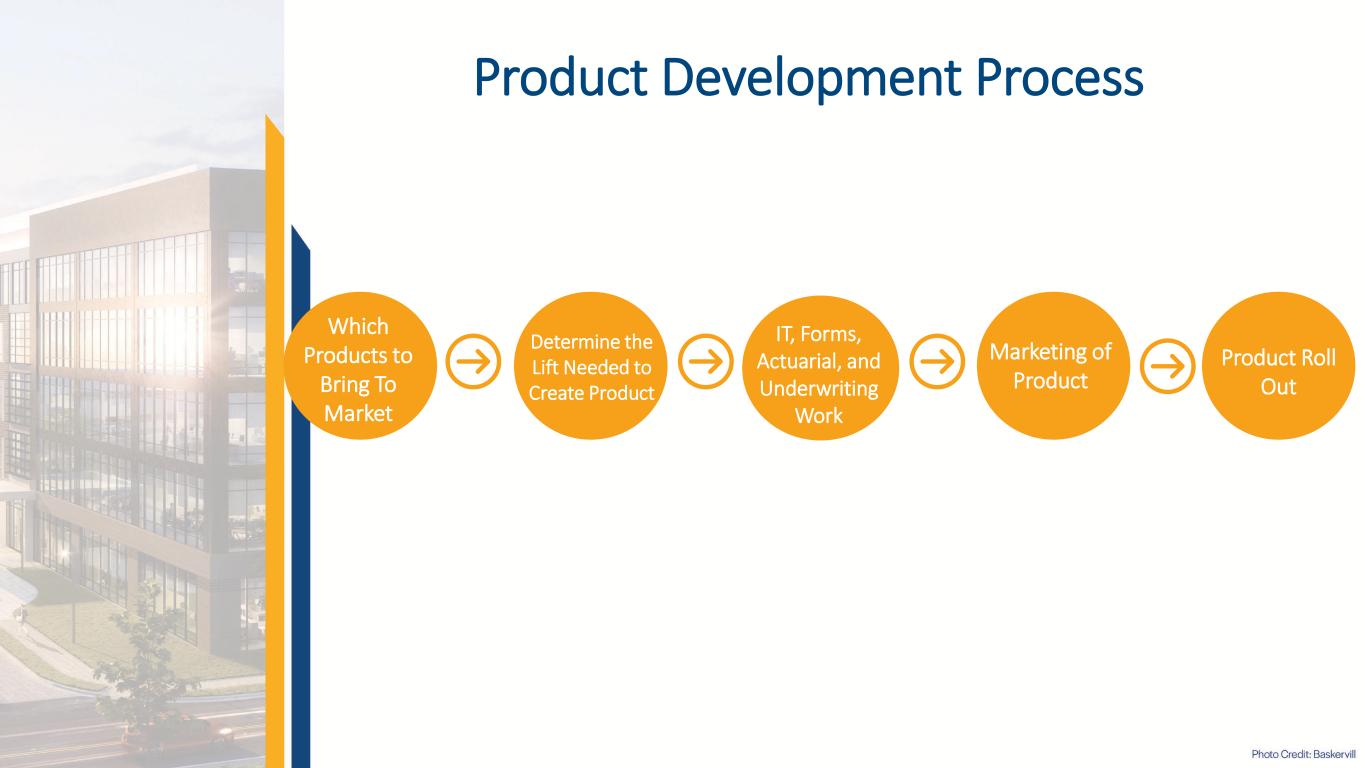
Which Products to Bring To Market Determine the Lift Needed to Create Product IT, Forms, Actuarial, and Underwriting Work Marketing of Product Product Roll Out Product Development Process
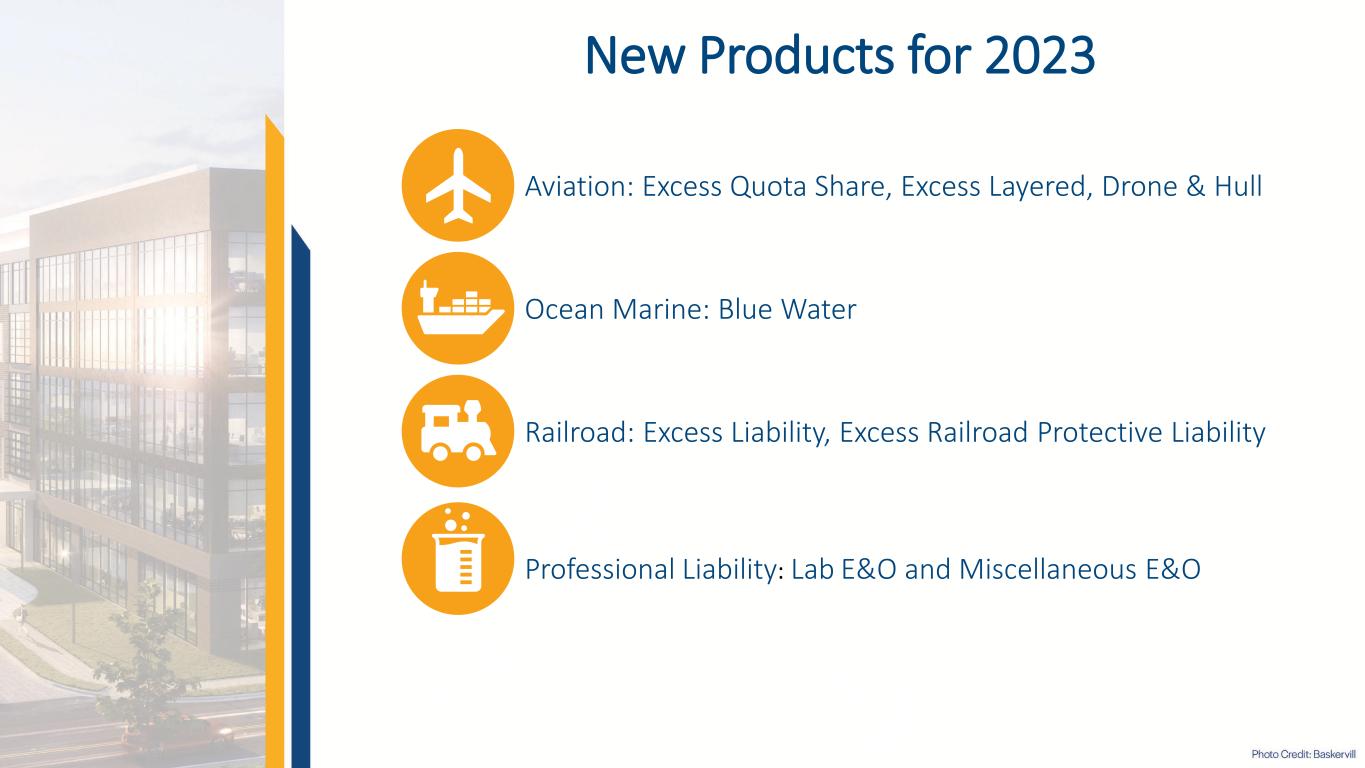
New Products for 2023 Railroad: Excess Liability, Excess Railroad Protective Liability Ocean Marine: Blue Water Aviation: Excess Quota Share, Excess Layered, Drone & Hull Professional Liability: Lab E&O and Miscellaneous E&O
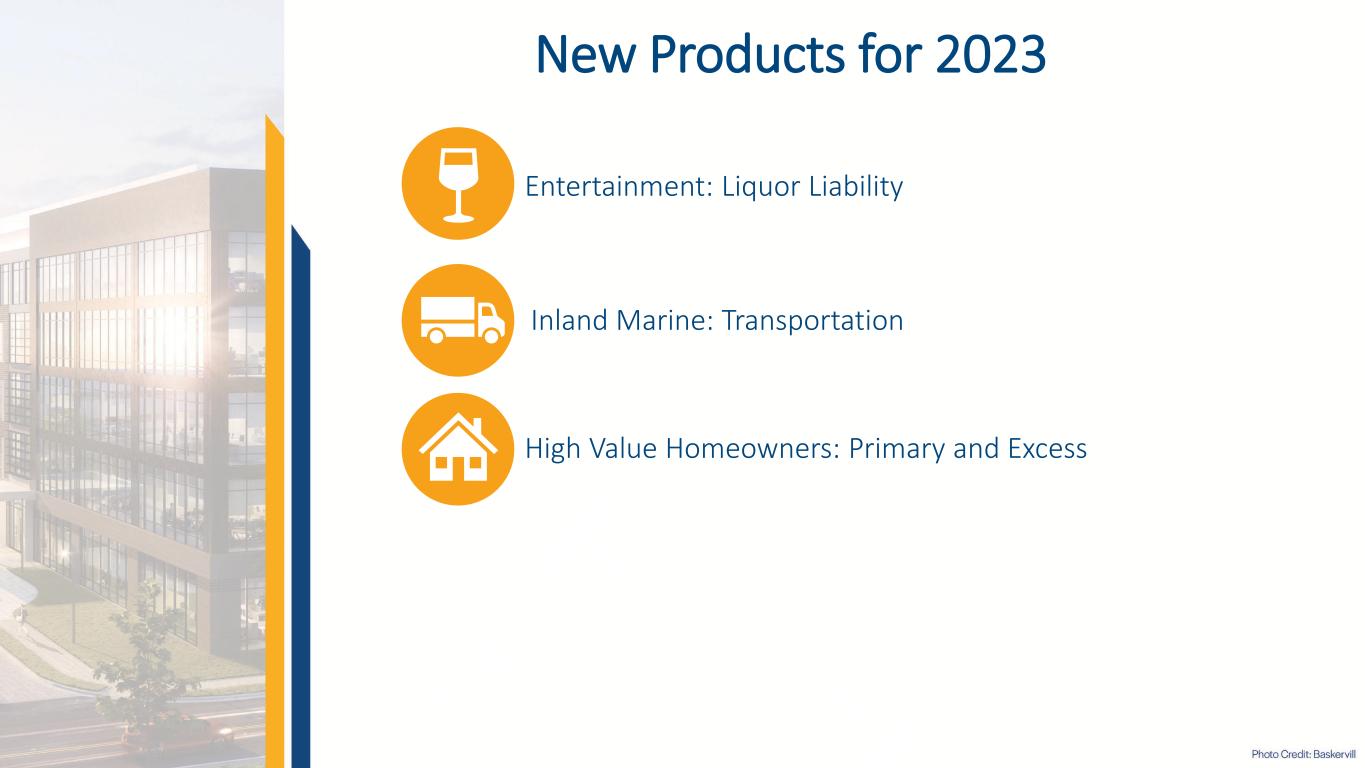
New Products for 2023 High Value Homeowners: Primary and Excess Inland Marine: Transportation Entertainment: Liquor Liability
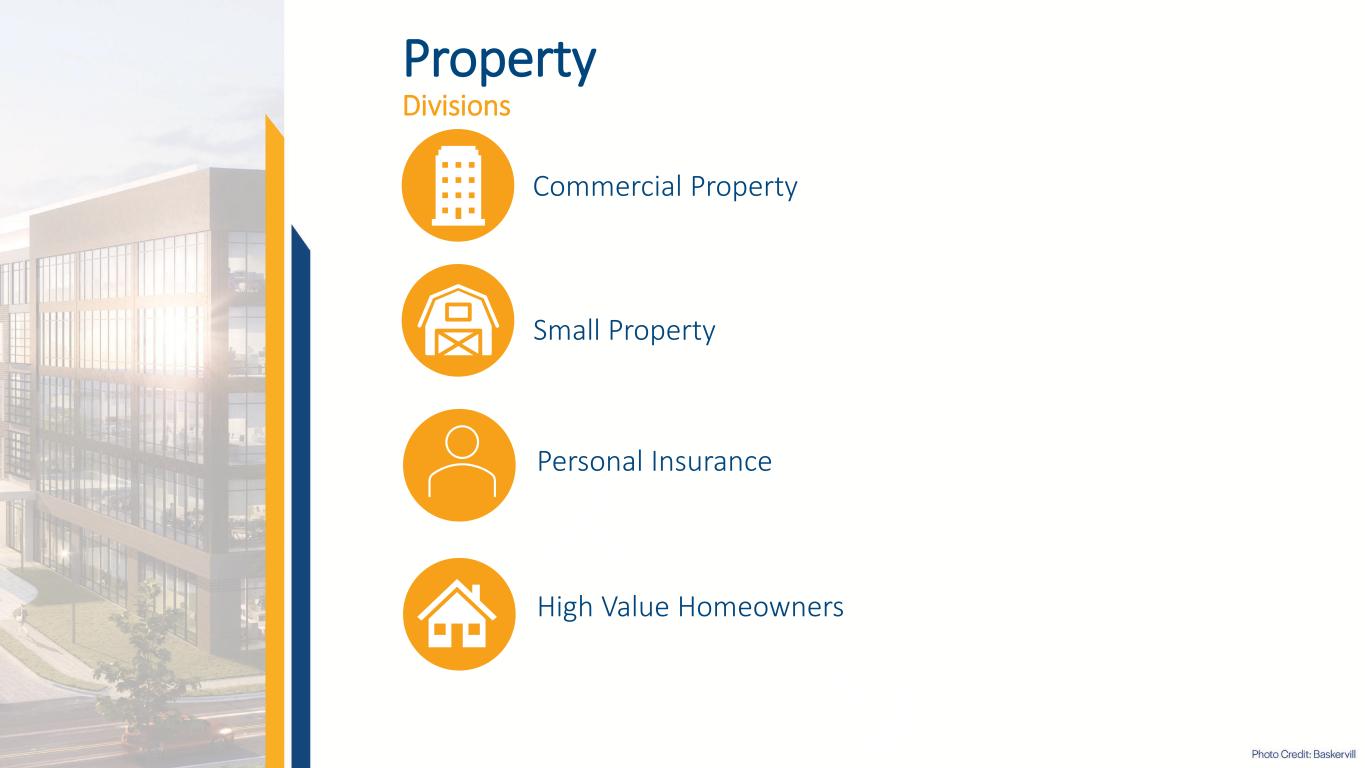
Property Divisions Small Property Commercial Property Personal Insurance High Value Homeowners
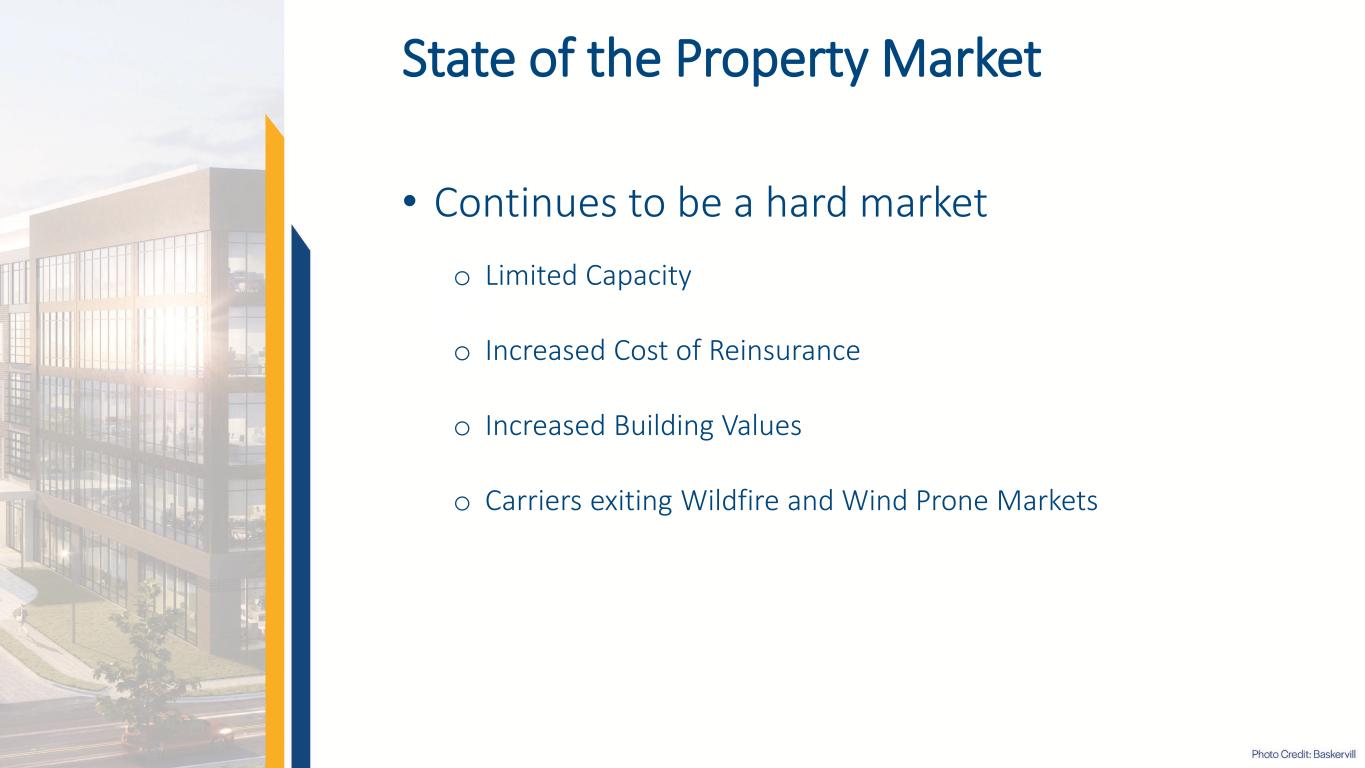
State of the Property Market • Continues to be a hard market o Limited Capacity o Increased Cost of Reinsurance o Increased Building Values o Carriers exiting Wildfire and Wind Prone Markets
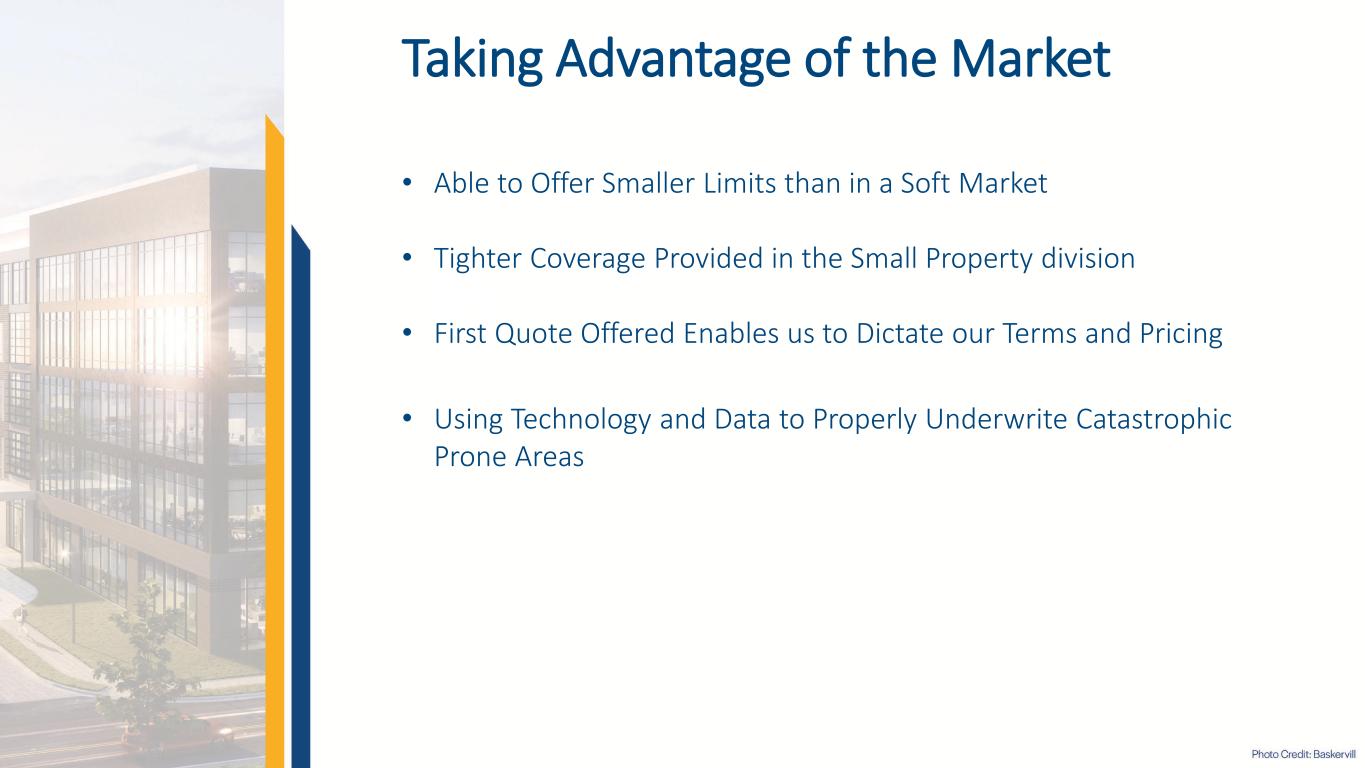
Taking Advantage of the Market • Able to Offer Smaller Limits than in a Soft Market • Tighter Coverage Provided in the Small Property division • First Quote Offered Enables us to Dictate our Terms and Pricing • Using Technology and Data to Properly Underwrite Catastrophic Prone Areas
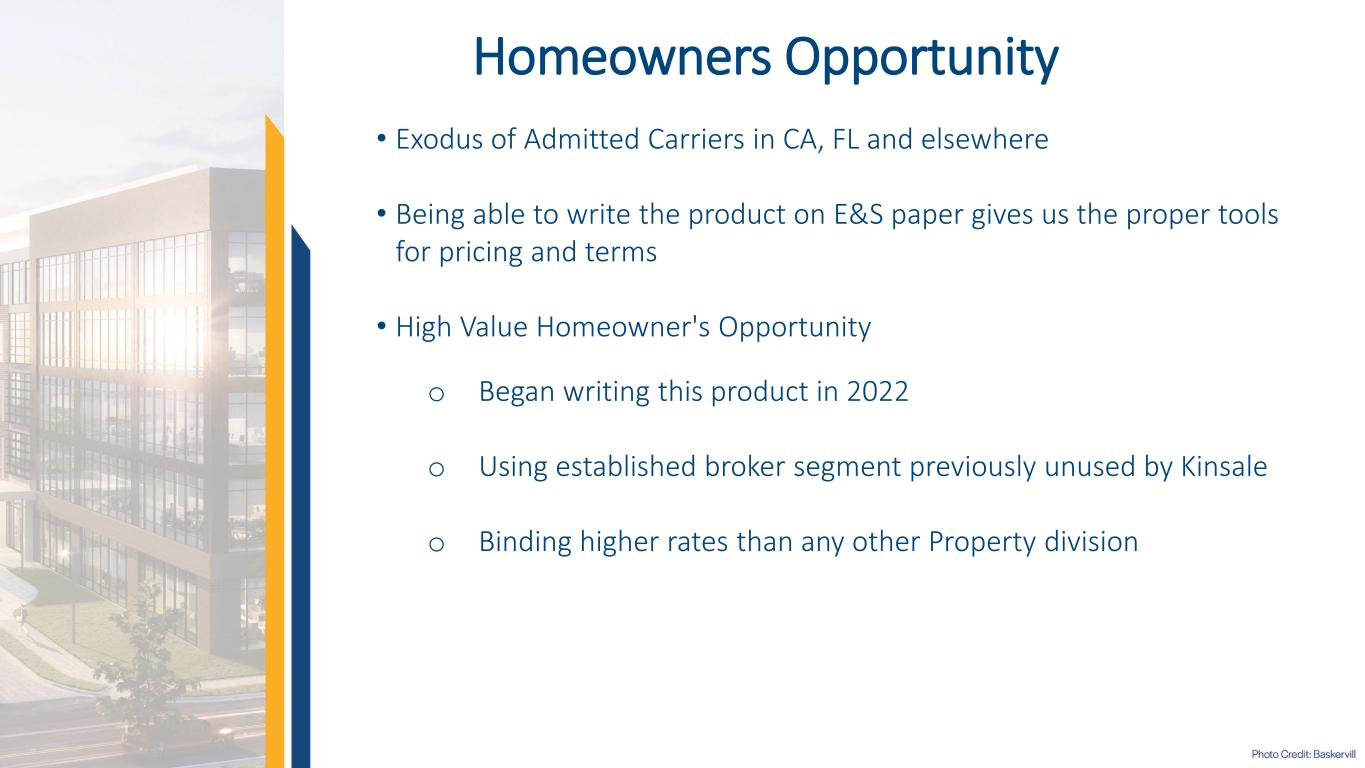
Homeowners Opportunity • Exodus of Admitted Carriers in CA, FL and elsewhere • Being able to write the product on E&S paper gives us the proper tools for pricing and terms • High Value Homeowner's Opportunity o Began writing this product in 2022 o Using established broker segment previously unused by Kinsale o Binding higher rates than any other Property division
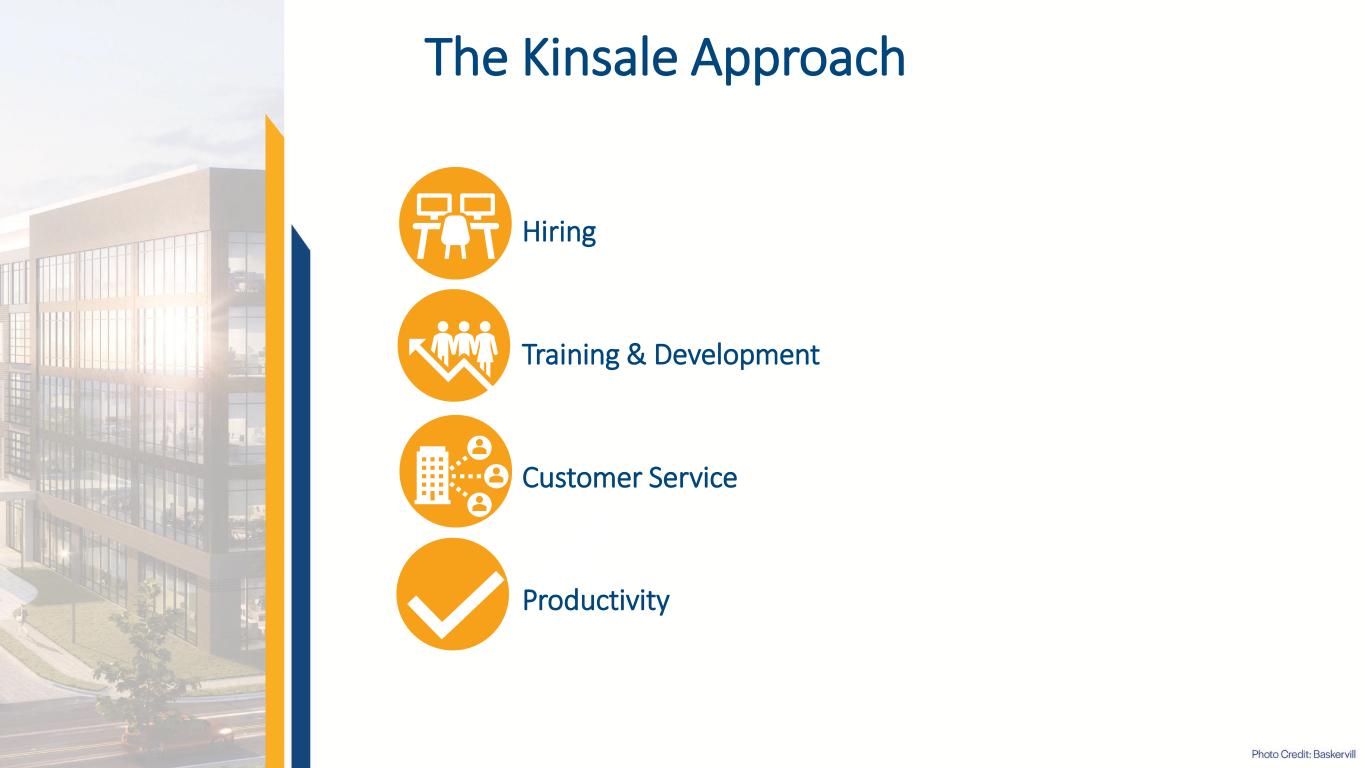
Productivity Customer Service Training & Development Hiring The Kinsale Approach
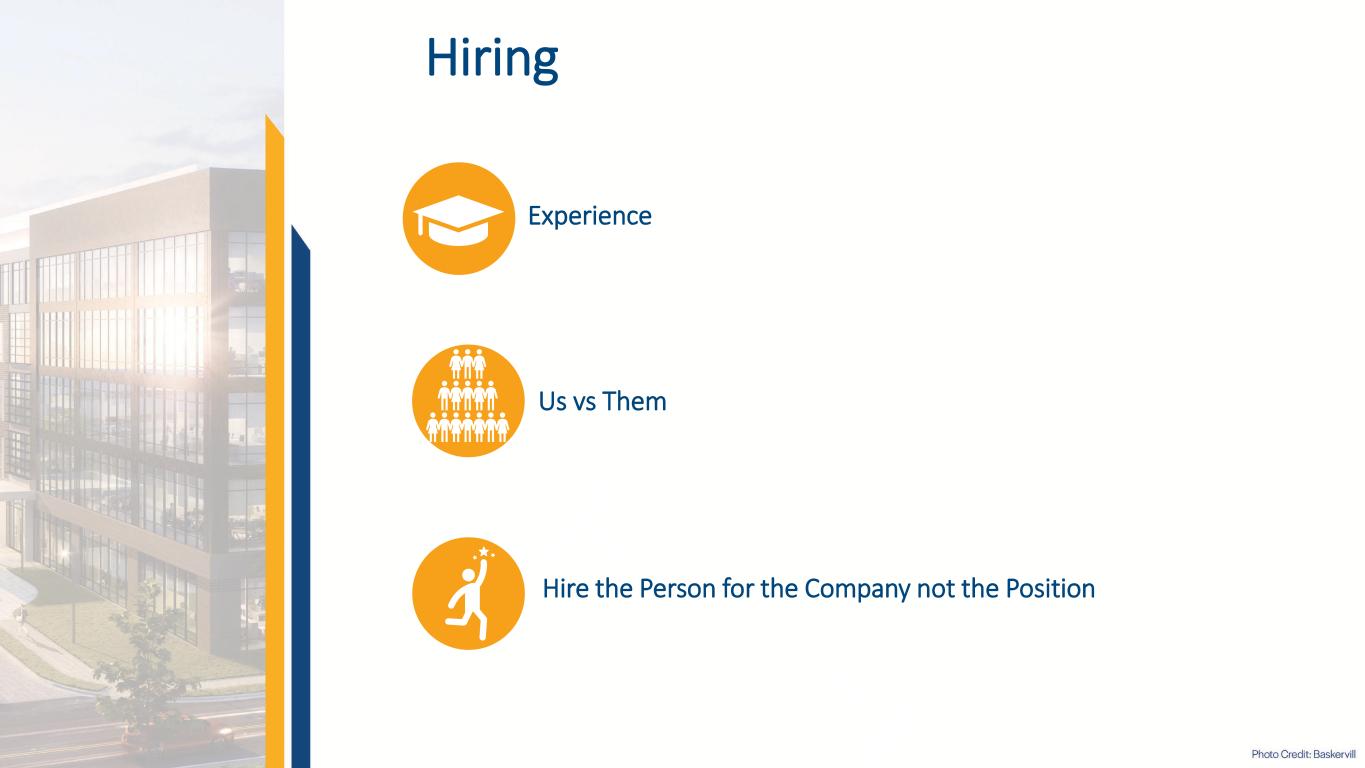
Hiring Hire the Person for the Company not the Position Us vs Them Experience
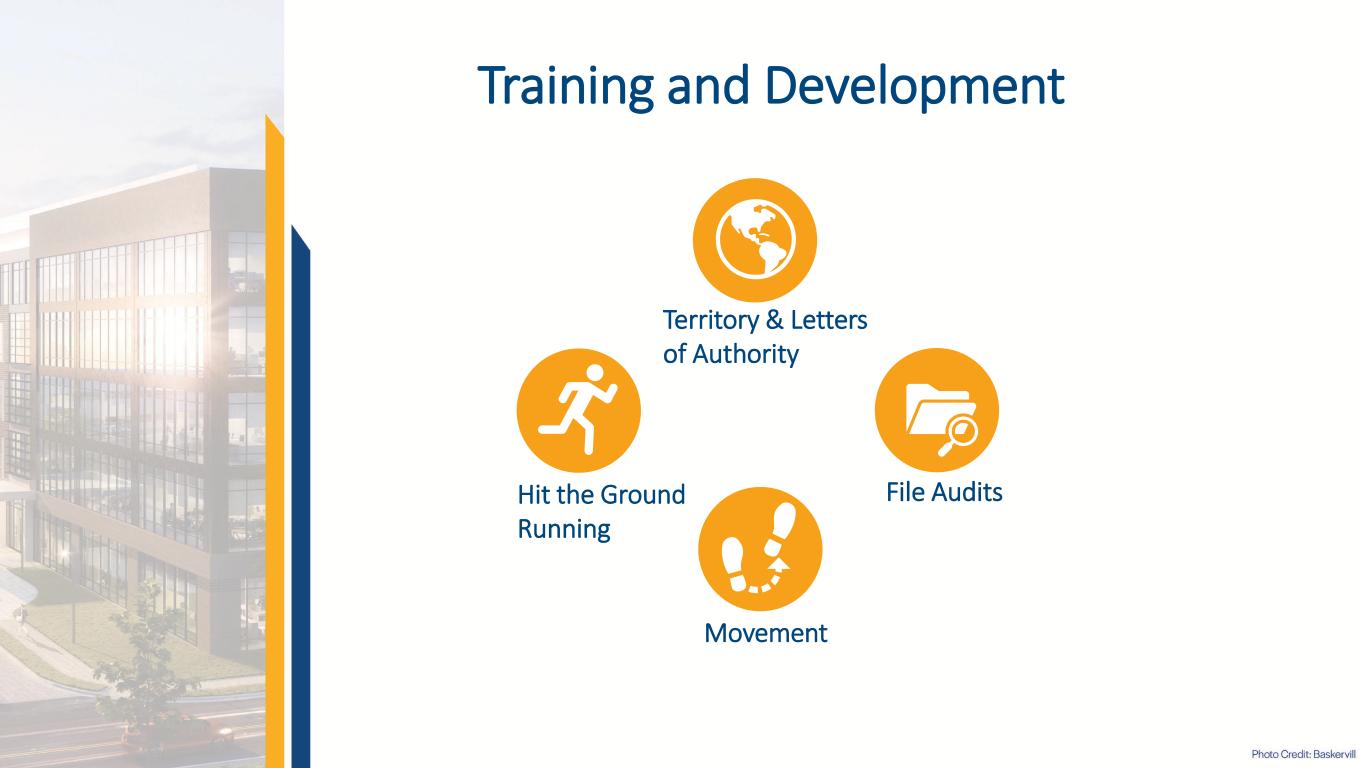
Training and Development Hit the Ground Running Movement Territory & Letters of Authority File Audits
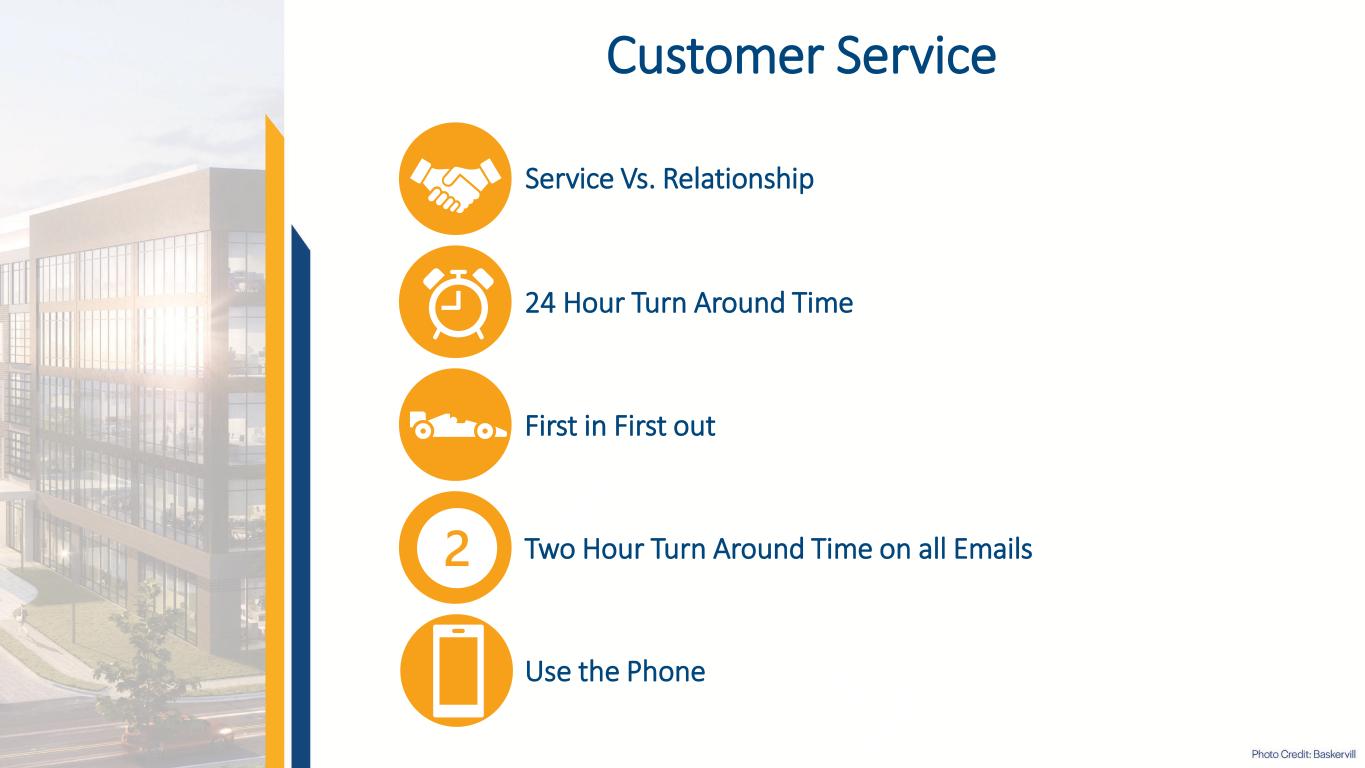
Customer Service Use the Phone Two Hour Turn Around Time on all Emails First in First out 24 Hour Turn Around Time Service Vs. Relationship
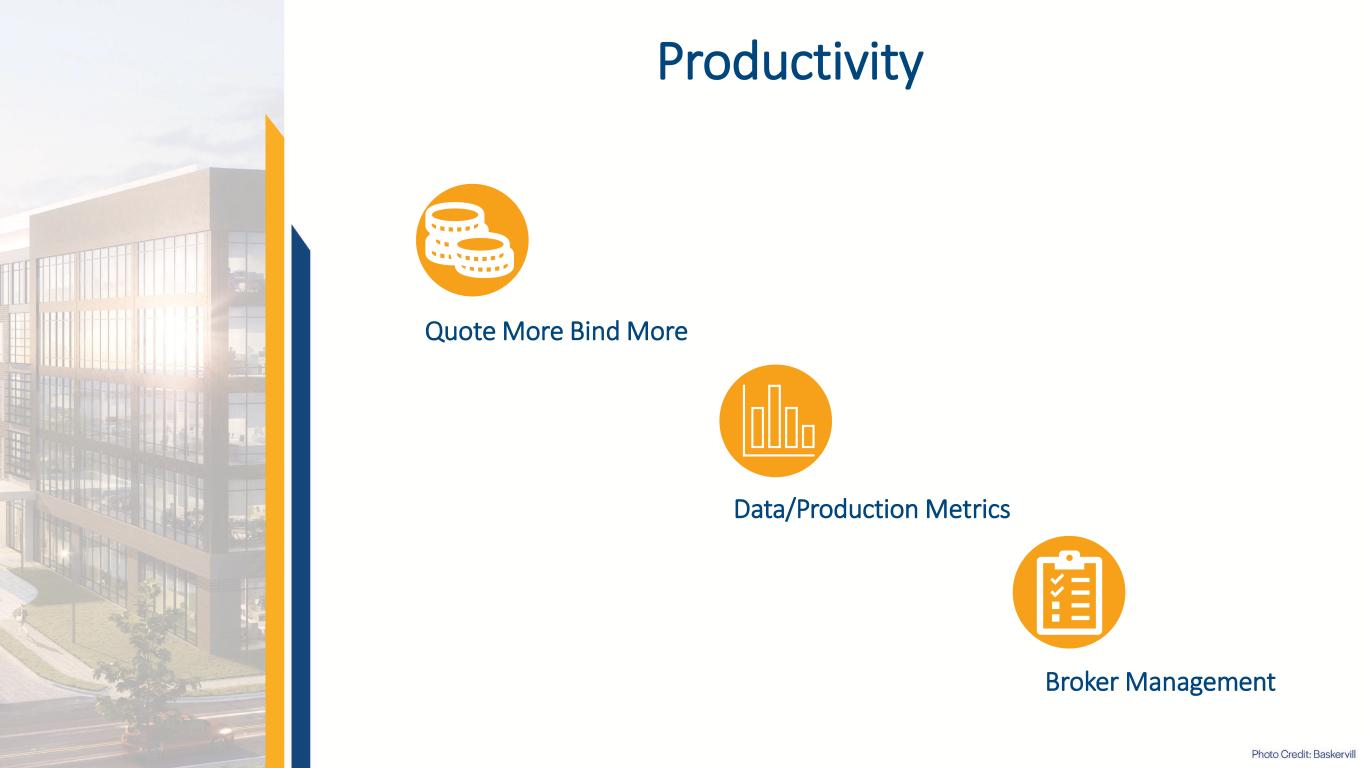
Productivity Quote More Bind More Data/Production Metrics Broker Management
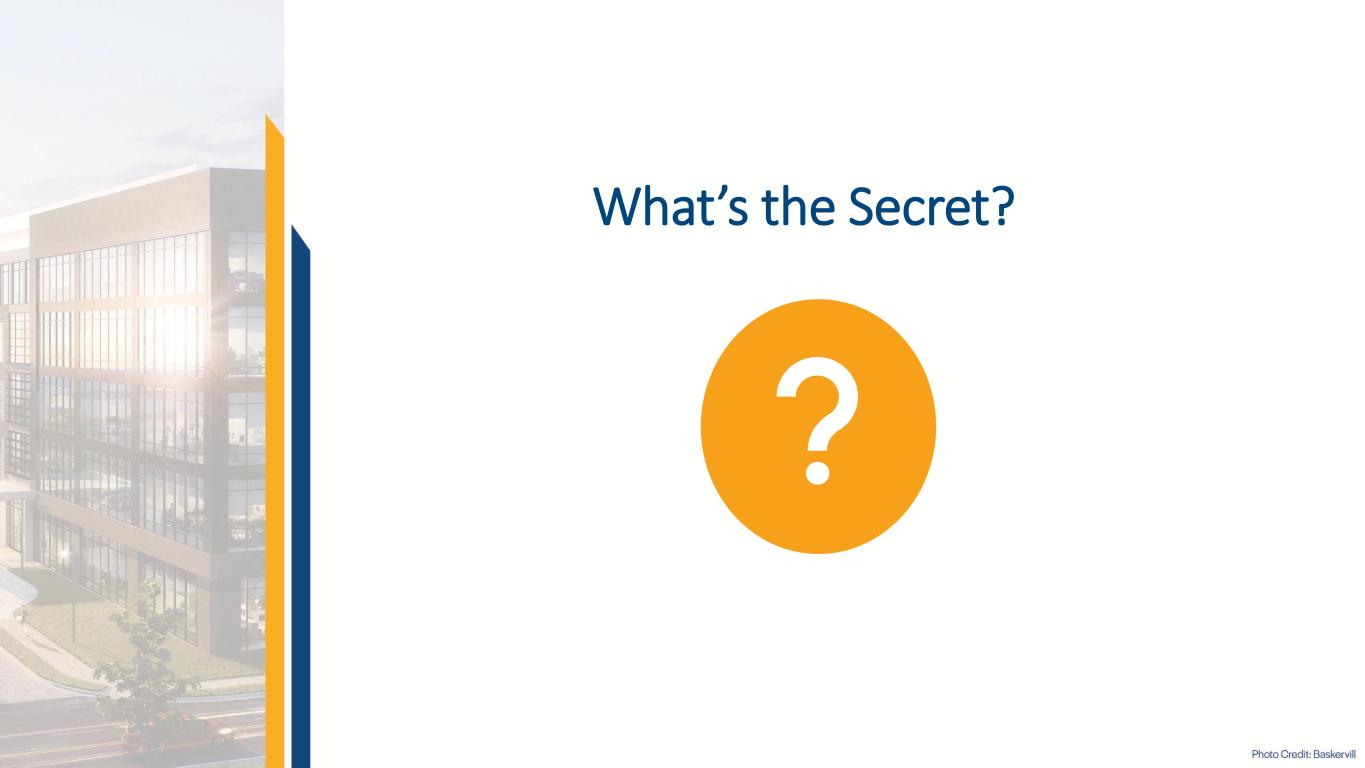
What’s the Secret?
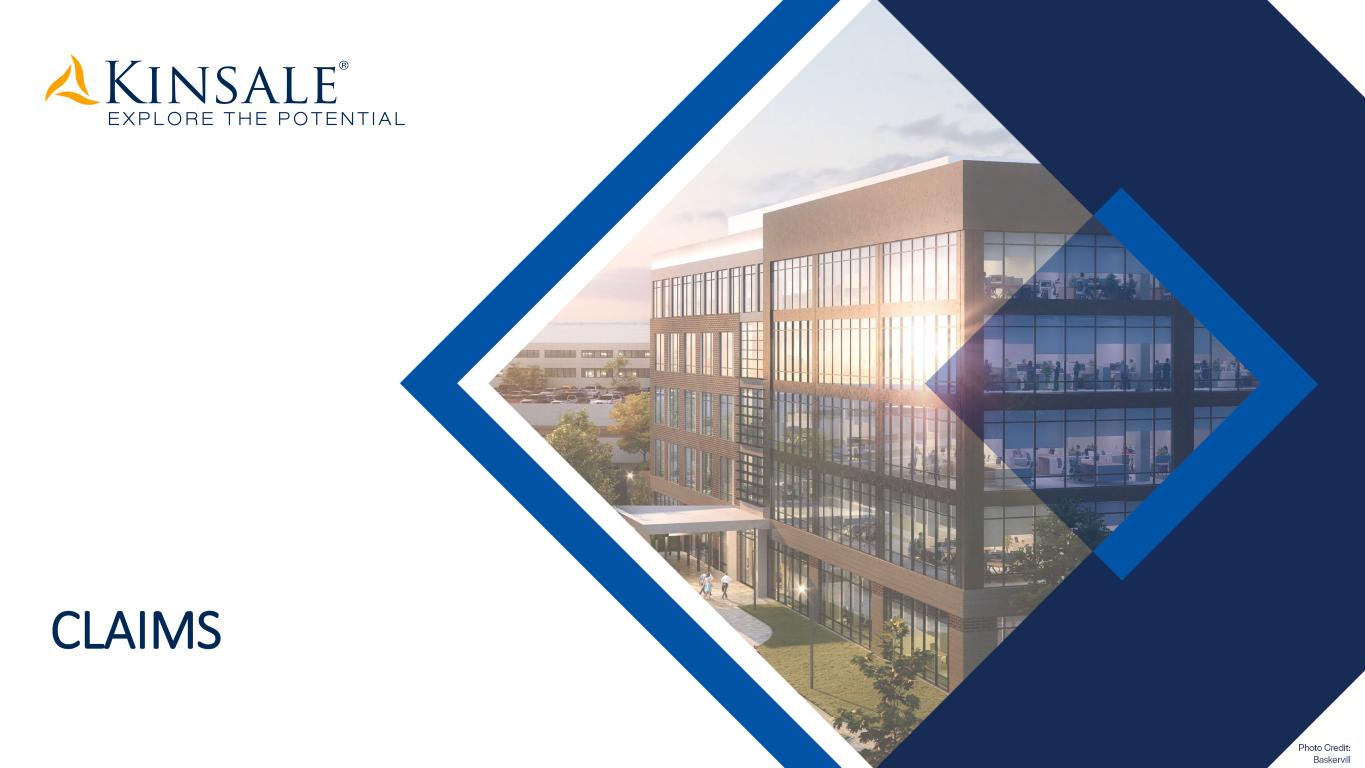
CLAIMS
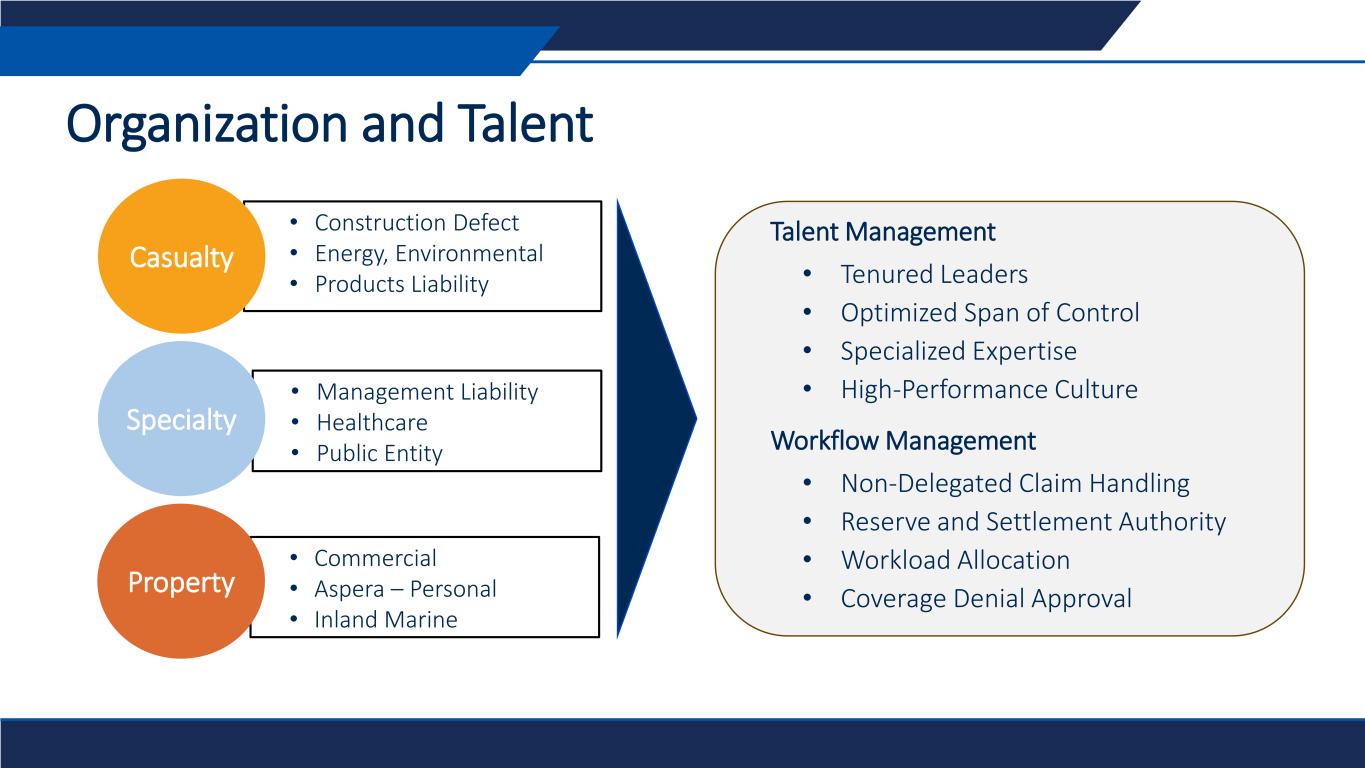
Organization and Talent • Construction Defect • Energy, Environmental • Products Liability • Management Liability • Healthcare • Public Entity • Commercial • Aspera – Personal • Inland Marine Casualty Property Specialty Talent Management • Tenured Leaders • Optimized Span of Control • Specialized Expertise • High-Performance Culture Workflow Management • Non-Delegated Claim Handling • Reserve and Settlement Authority • Workload Allocation • Coverage Denial Approval
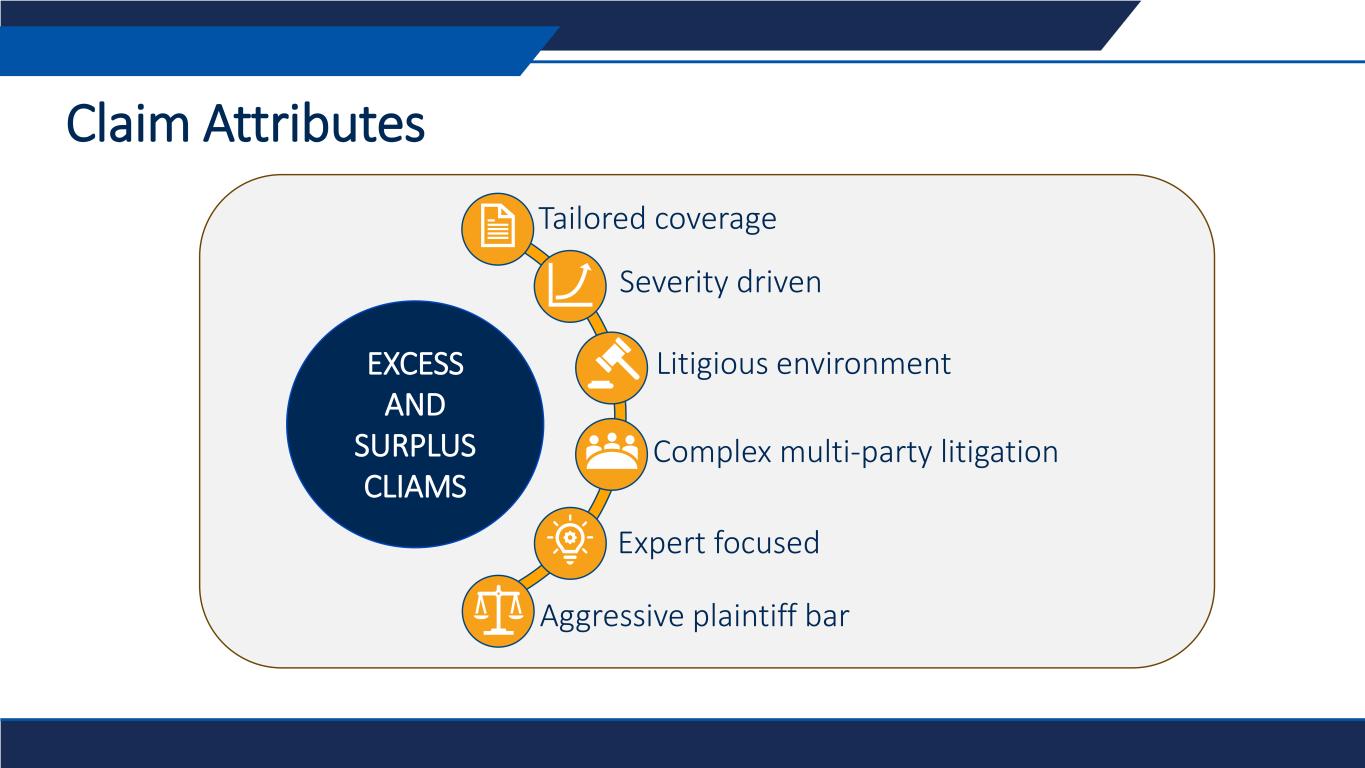
Claim Attributes Severity driven Complex multi-party litigation Litigious environment Tailored coverage Aggressive plaintiff bar Expert focused EXCESS AND SURPLUS CLIAMS
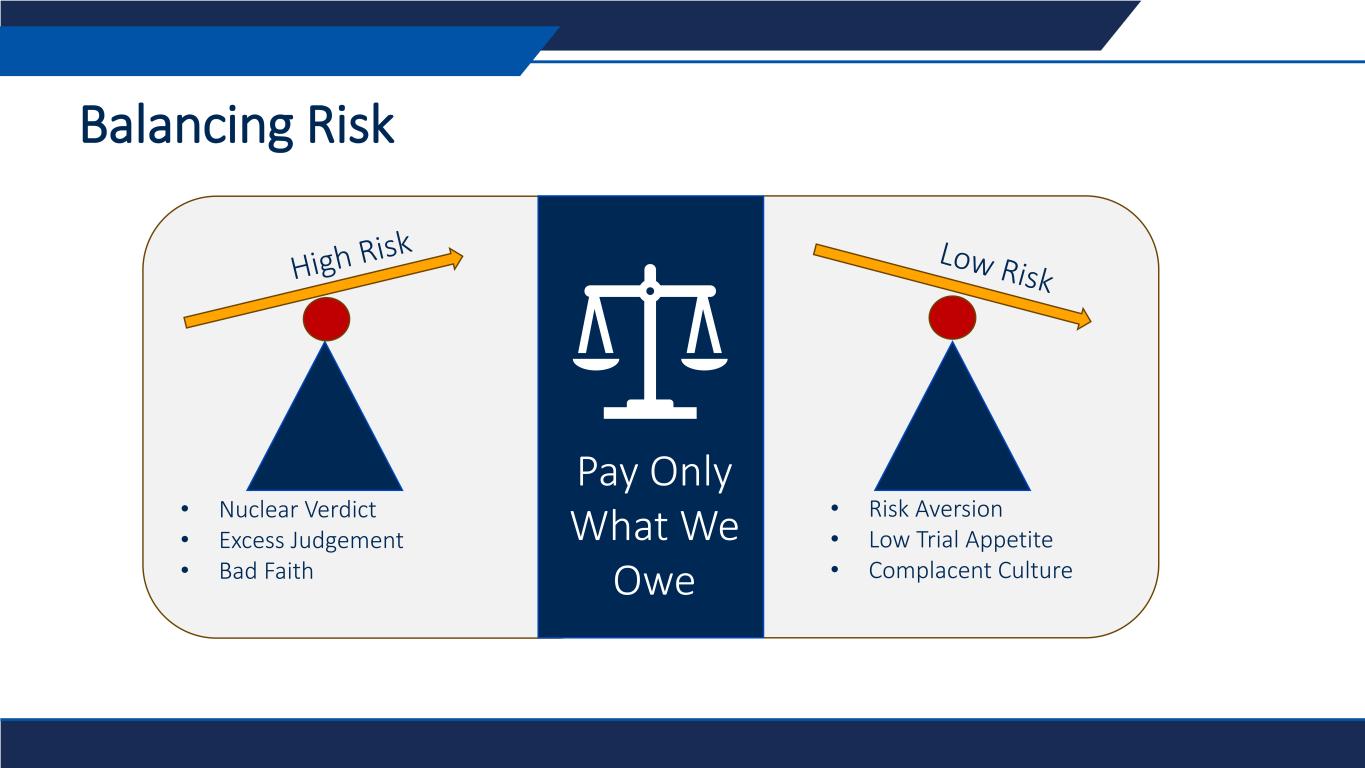
Balancing Risk • Nuclear Verdict • Excess Judgement • Bad Faith • Risk Aversion • Low Trial Appetite • Complacent Culture Pay Only What We Owe
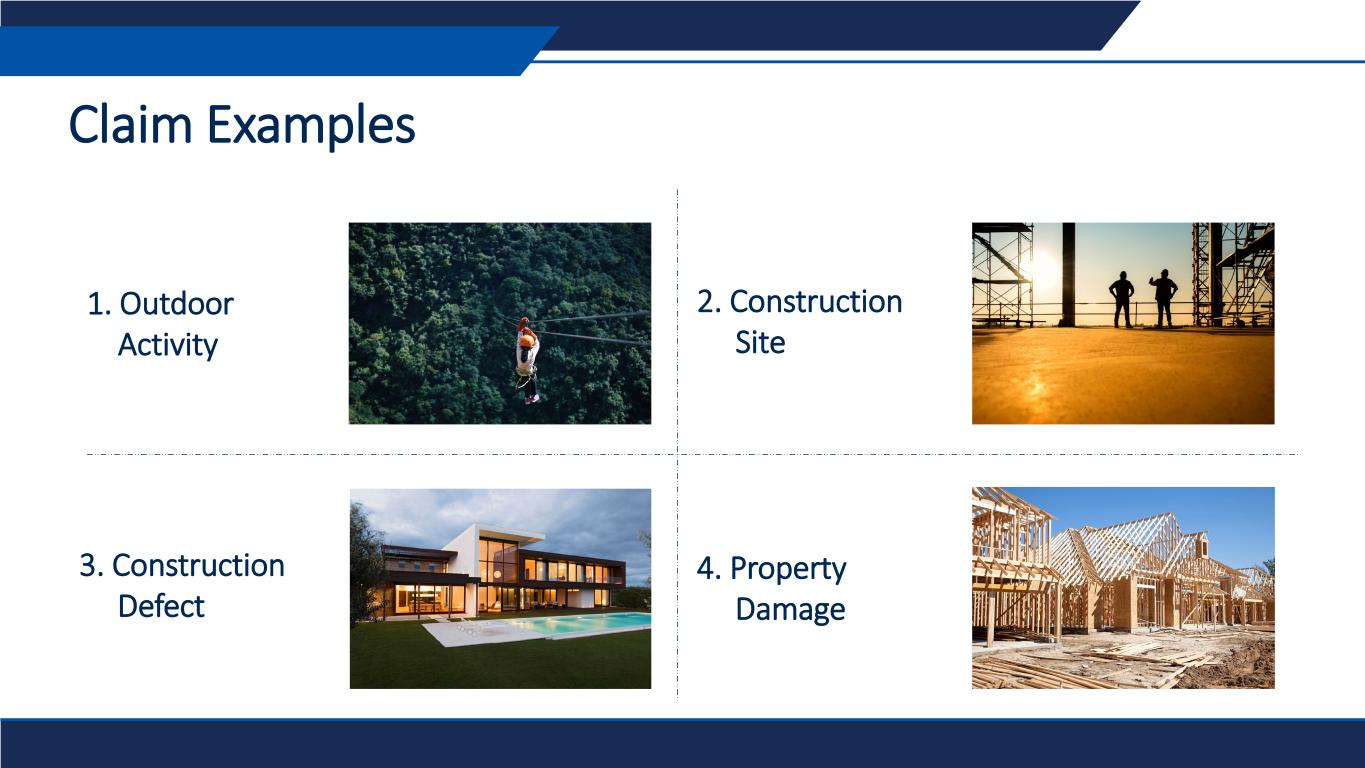
Claim Examples 1. Outdoor Activity 3. Construction Defect 2. Construction Site 4. Property Damage

TECHNOLOGY: TARGET STATE
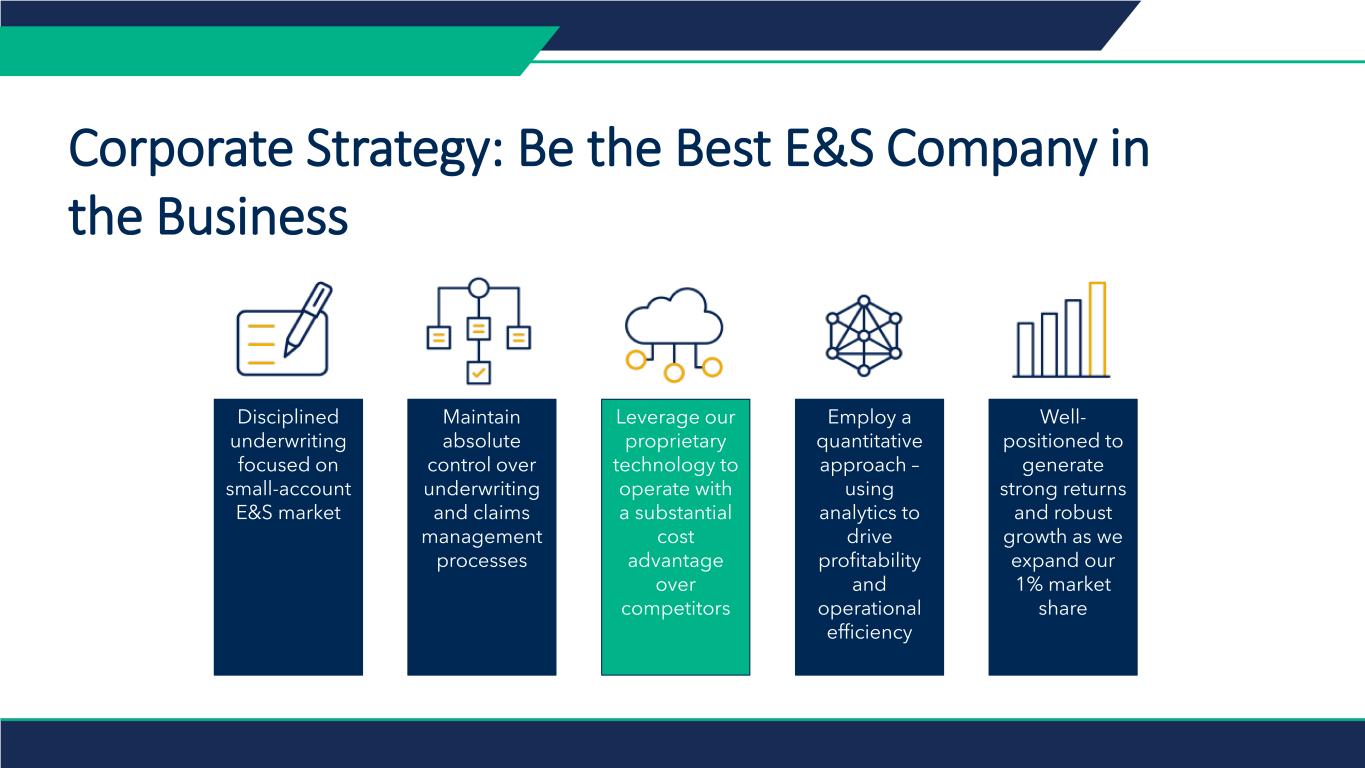
Disciplined underwriting focused on small-account E&S market Maintain absolute control over underwriting and claims management processes Leverage our proprietary technology to operate with a substantial cost advantage over competitors Employ a quantitative approach – using analytics to drive profitability and operational efficiency Well- positioned to generate strong returns and robust growth as we expand our 1% market share Corporate Strategy: Be the Best E&S Company in the Business
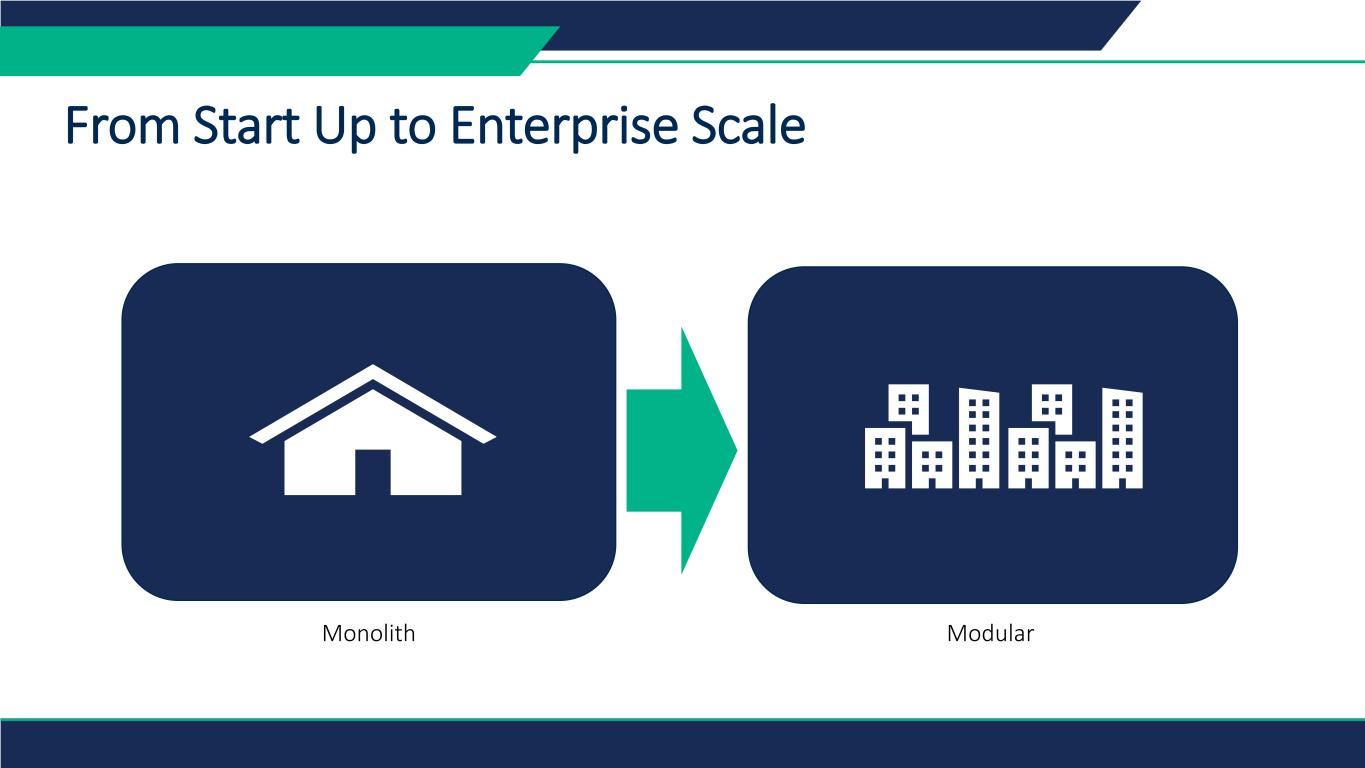
From Start Up to Enterprise Scale Monolith Modular
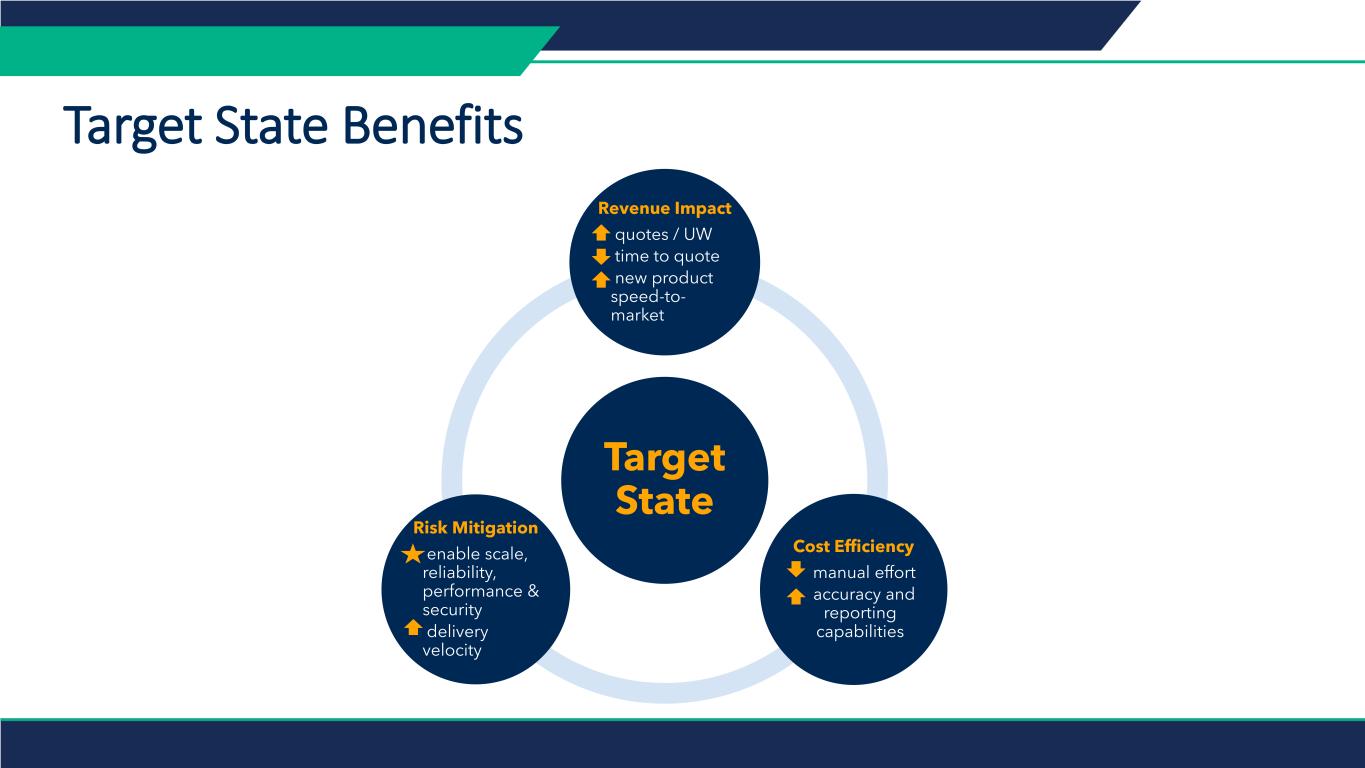
Target State Benefits Target State Revenue Impact • quotes / UW • time to quote • new product speed-to- market Cost Efficiency • manual effort • accuracy and reporting capabilities Risk Mitigation • enable scale, reliability, performance & security • delivery velocity
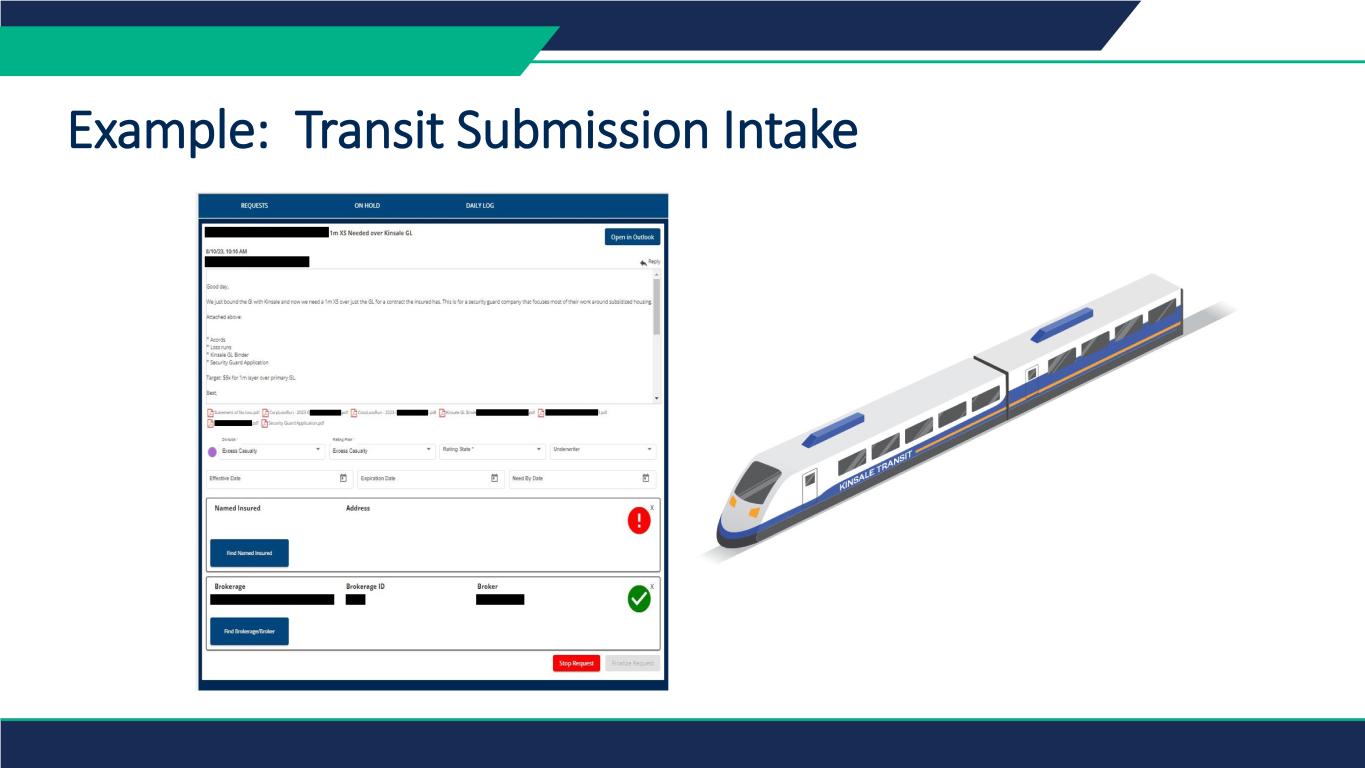
Example: Transit Submission Intake
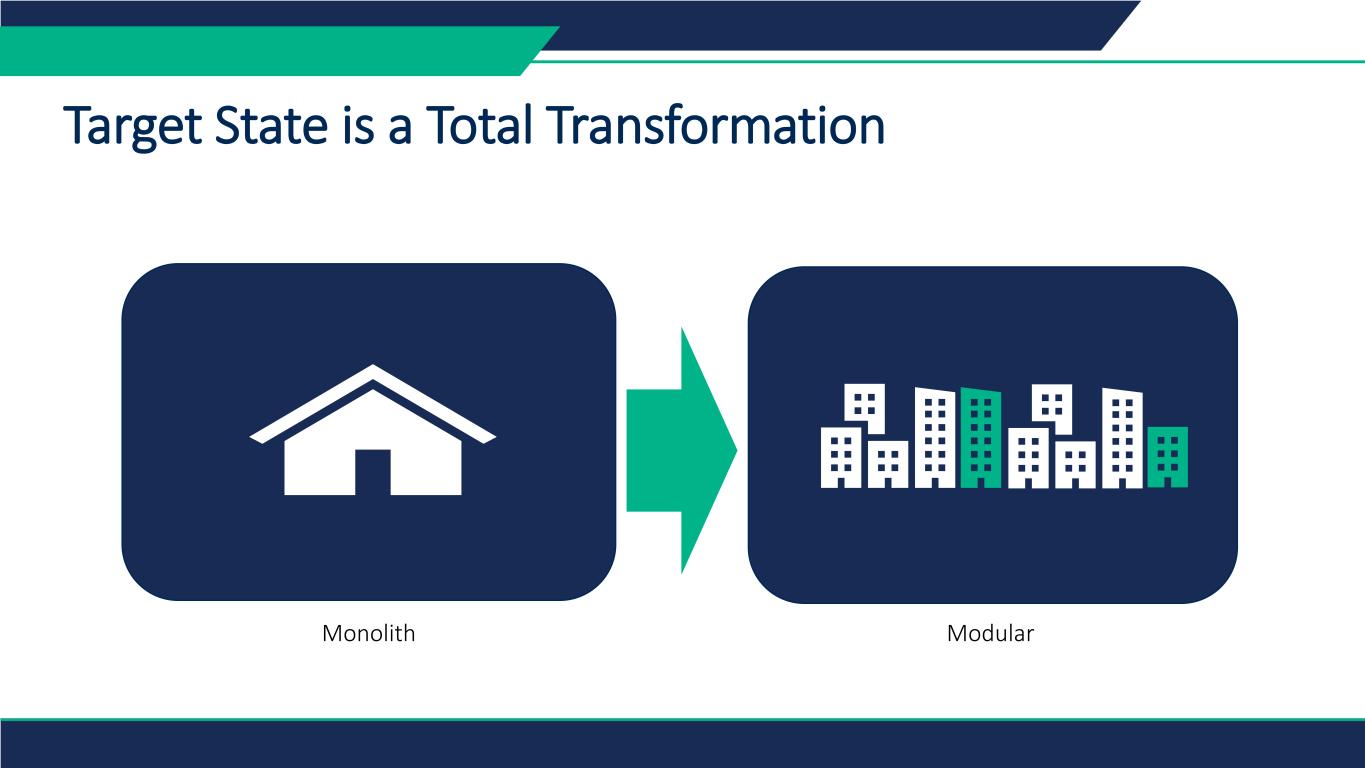
Target State is a Total Transformation Monolith Modular
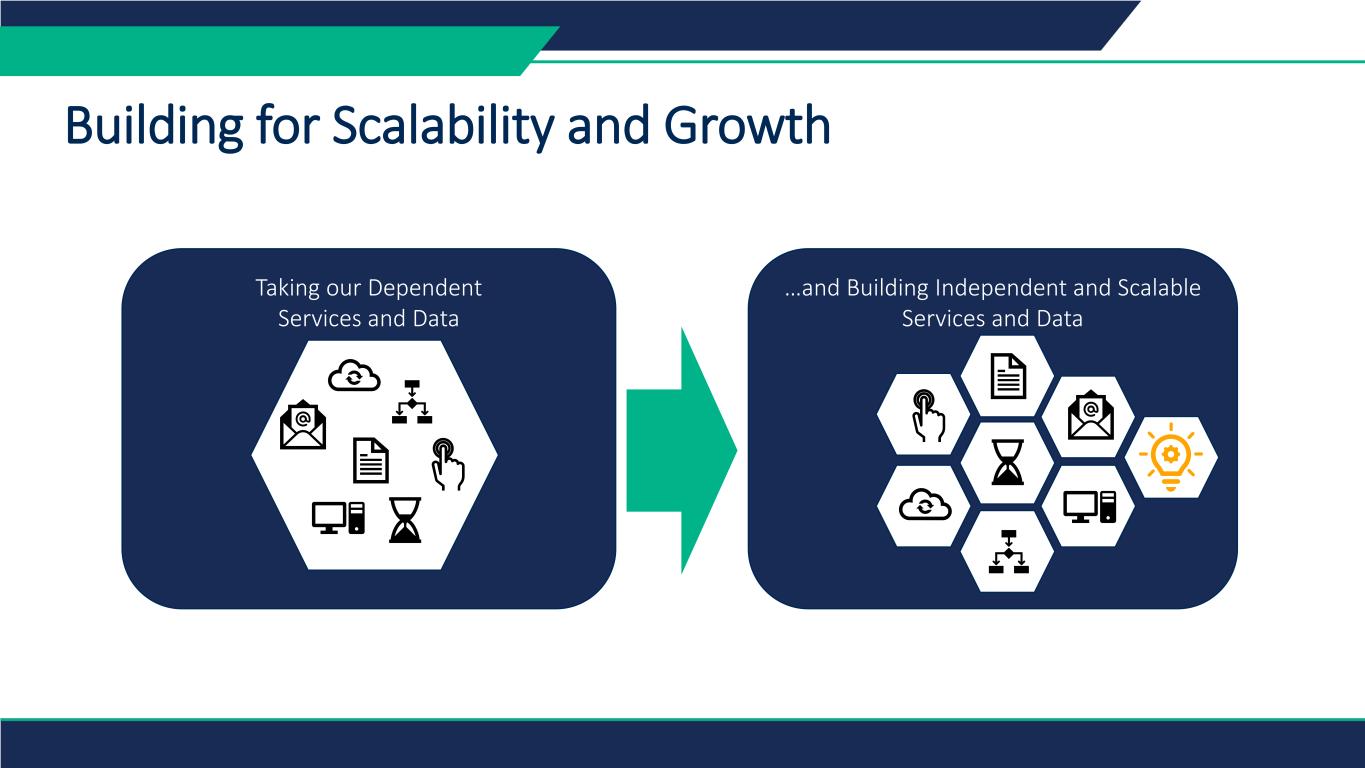
…and Building Independent and Scalable Services and Data Taking our Dependent Services and Data Building for Scalability and Growth
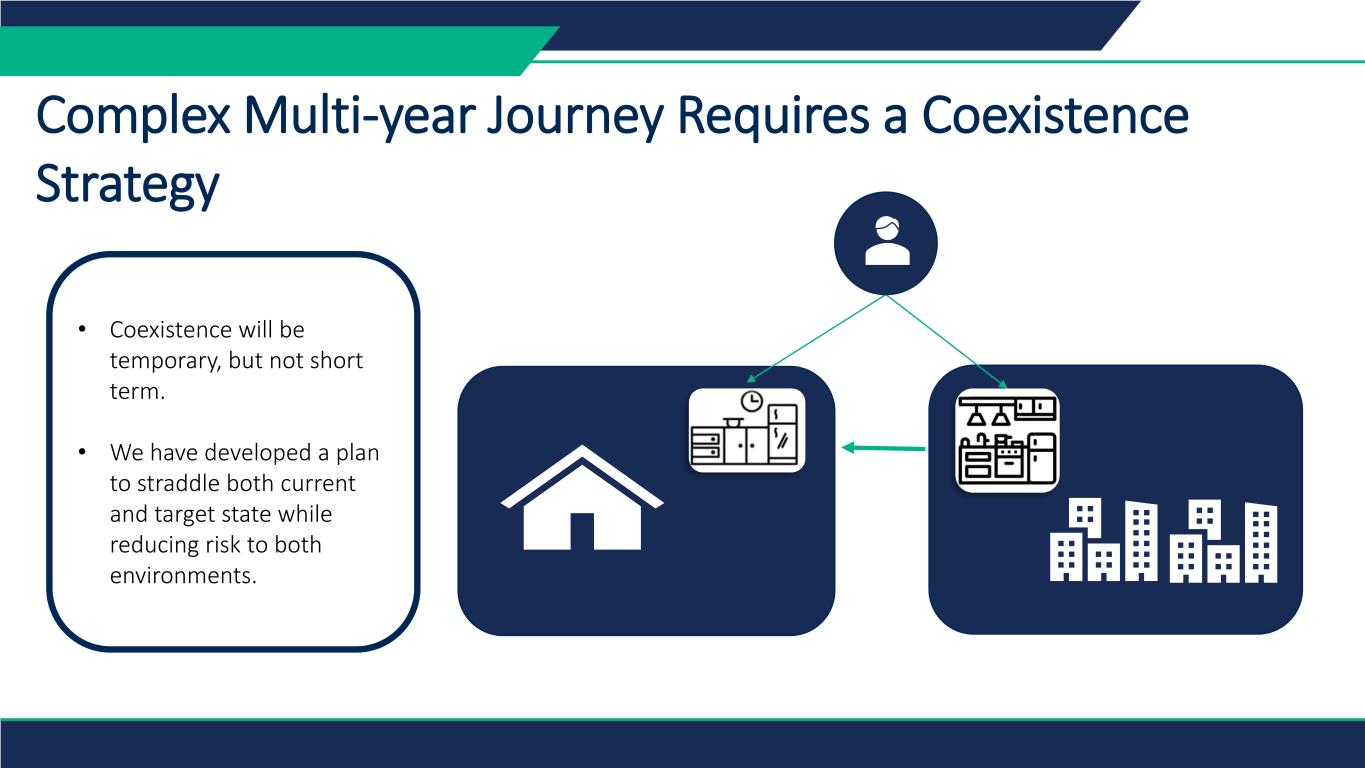
Complex Multi-year Journey Requires a Coexistence Strategy • Coexistence will be temporary, but not short term. • We have developed a plan to straddle both current and target state while reducing risk to both environments.
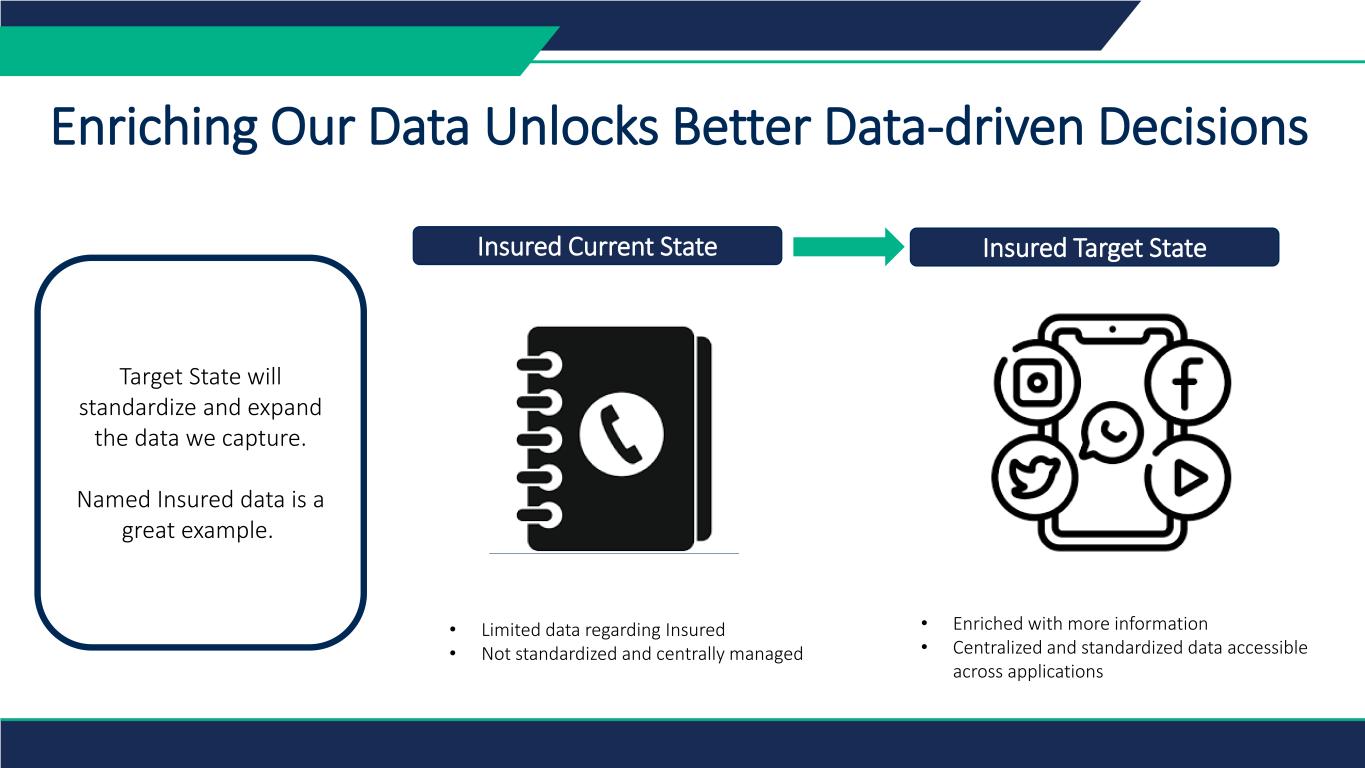
Insured Current State Insured Target State Target State will standardize and expand the data we capture. Named Insured data is a great example. • Limited data regarding Insured • Not standardized and centrally managed • Enriched with more information • Centralized and standardized data accessible across applications Enriching Our Data Unlocks Better Data-driven Decisions
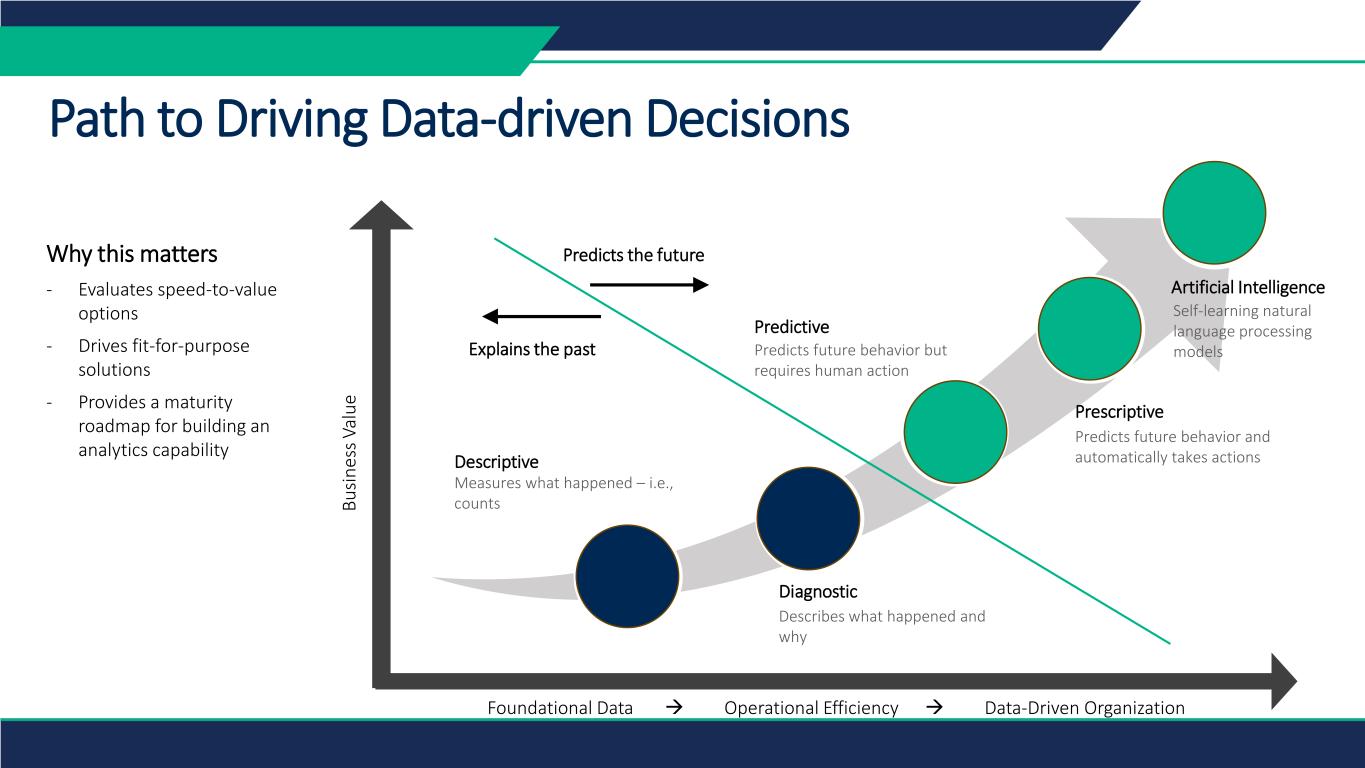
Path to Driving Data-driven Decisions Prescriptive Predicts future behavior and automatically takes actions Predictive Predicts future behavior but requires human action Diagnostic Describes what happened and why Descriptive Measures what happened – i.e., counts Foundational Data Operational Efficiency Data-Driven Organization Bu sin es s V al ue Explains the past Predicts the futureWhy this matters - Evaluates speed-to-value options - Drives fit-for-purpose solutions - Provides a maturity roadmap for building an analytics capability Artificial Intelligence Self-learning natural language processing models

“Change is HARD at first, MESSY in the middle and GORGEOUS at the end.” ~Robin Sharma, author and leadership expert Untangling Dependencies Standardizing on Modern Technology Managing Incremental Deployments and Coexistence Unstoppable Uncatchable Hard Messy Gorgeous
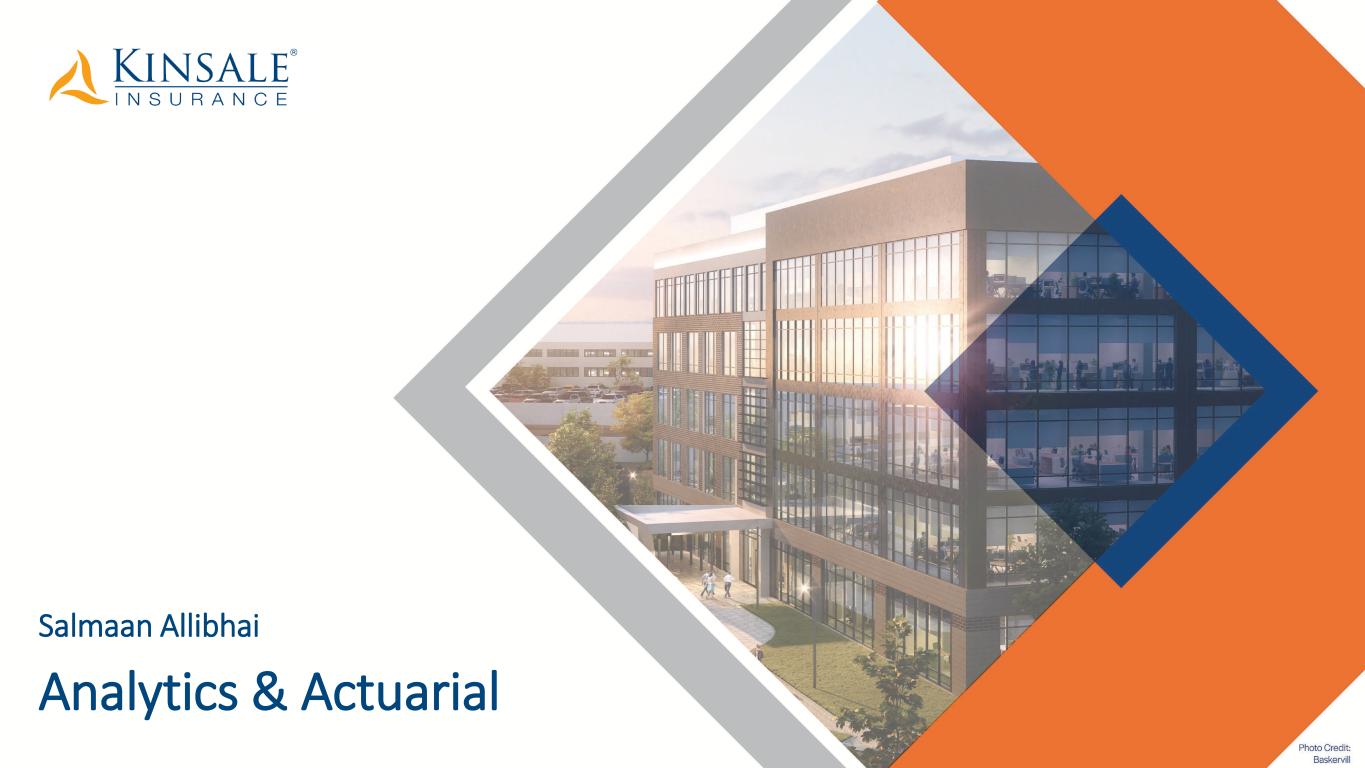
Analytics & Actuarial Salmaan Allibhai
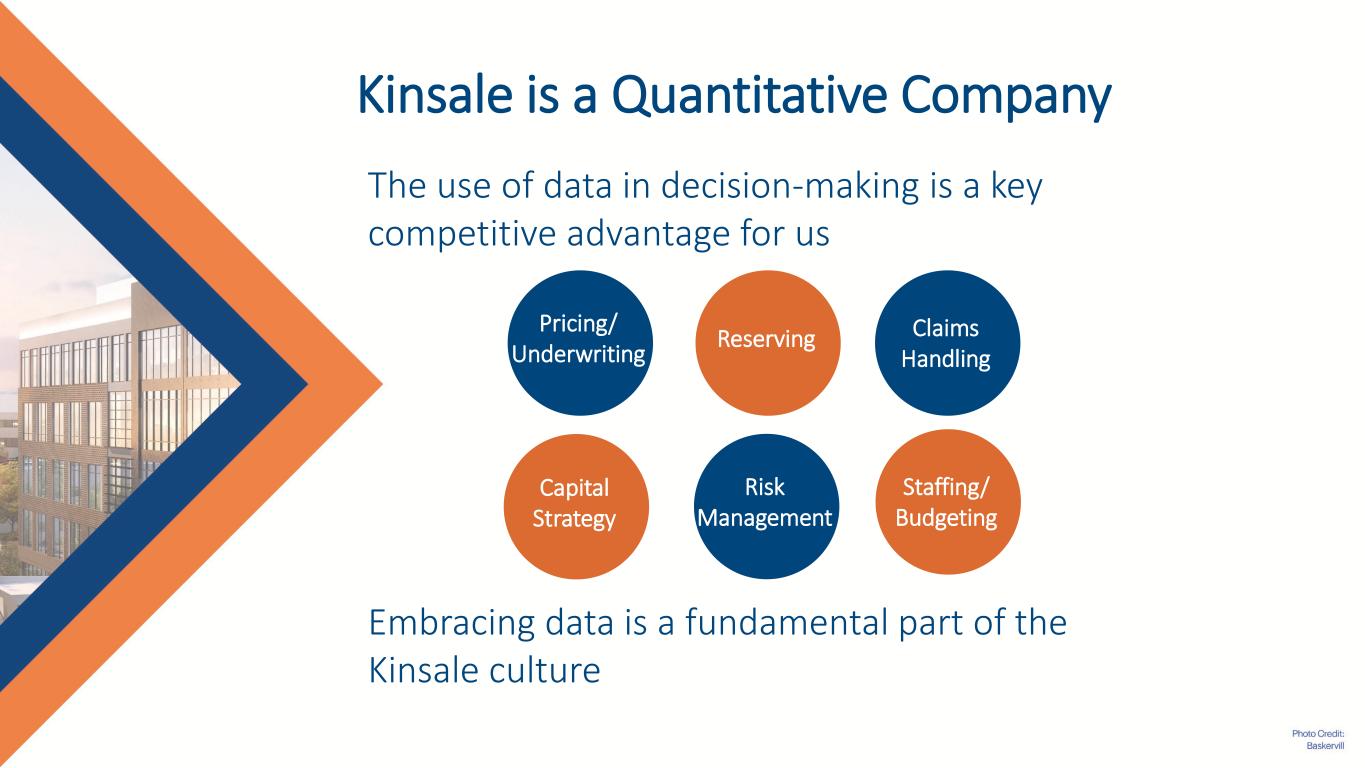
Kinsale is a Quantitative Company The use of data in decision-making is a key competitive advantage for us Embracing data is a fundamental part of the Kinsale culture Pricing/ Underwriting Reserving Claims Handling Capital Strategy Risk Management Staffing/ Budgeting
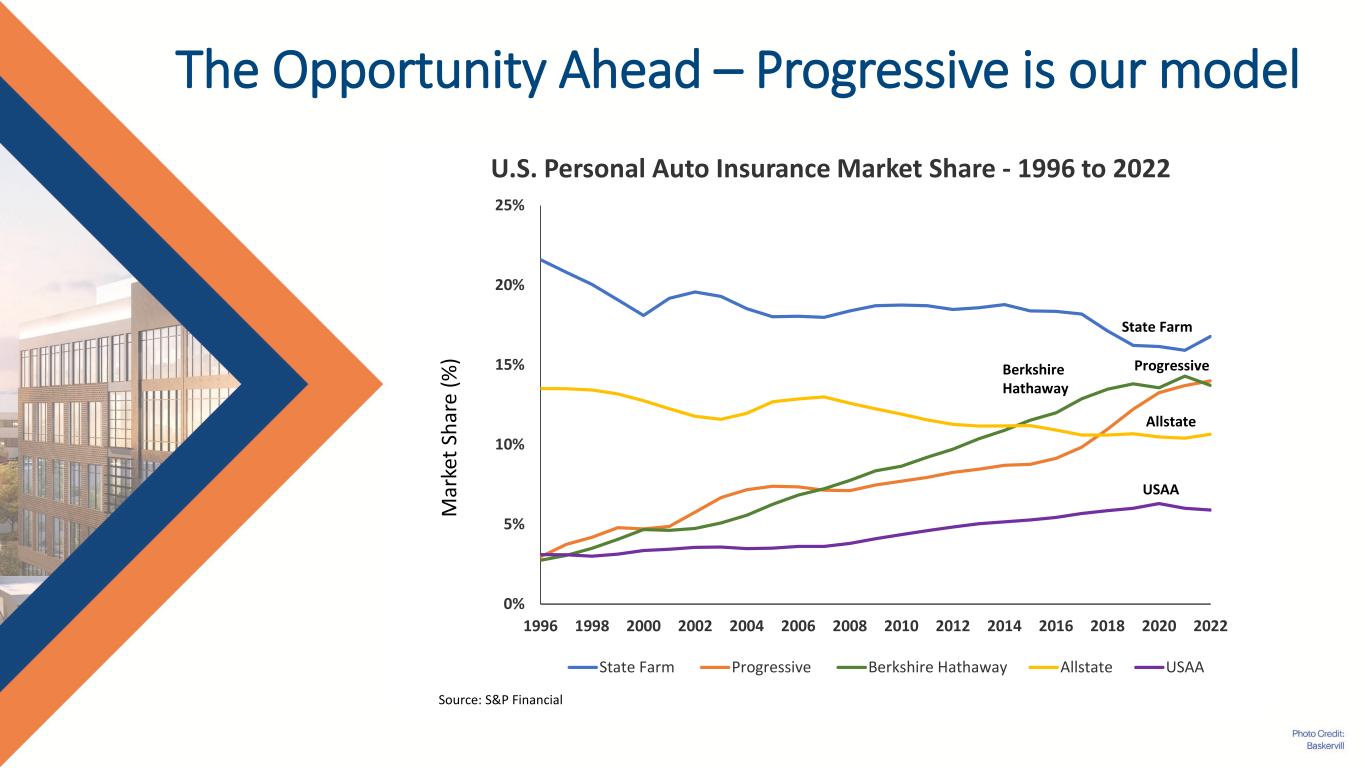
The Opportunity Ahead – Progressive is our model 0% 5% 10% 15% 20% 25% 1996 1998 2000 2002 2004 2006 2008 2010 2012 2014 2016 2018 2020 2022 M ar ke t S ha re (% ) U.S. Personal Auto Insurance Market Share - 1996 to 2022 State Farm Progressive Berkshire Hathaway Allstate USAA State Farm USAA Progressive Allstate Berkshire Hathaway Source: S&P Financial
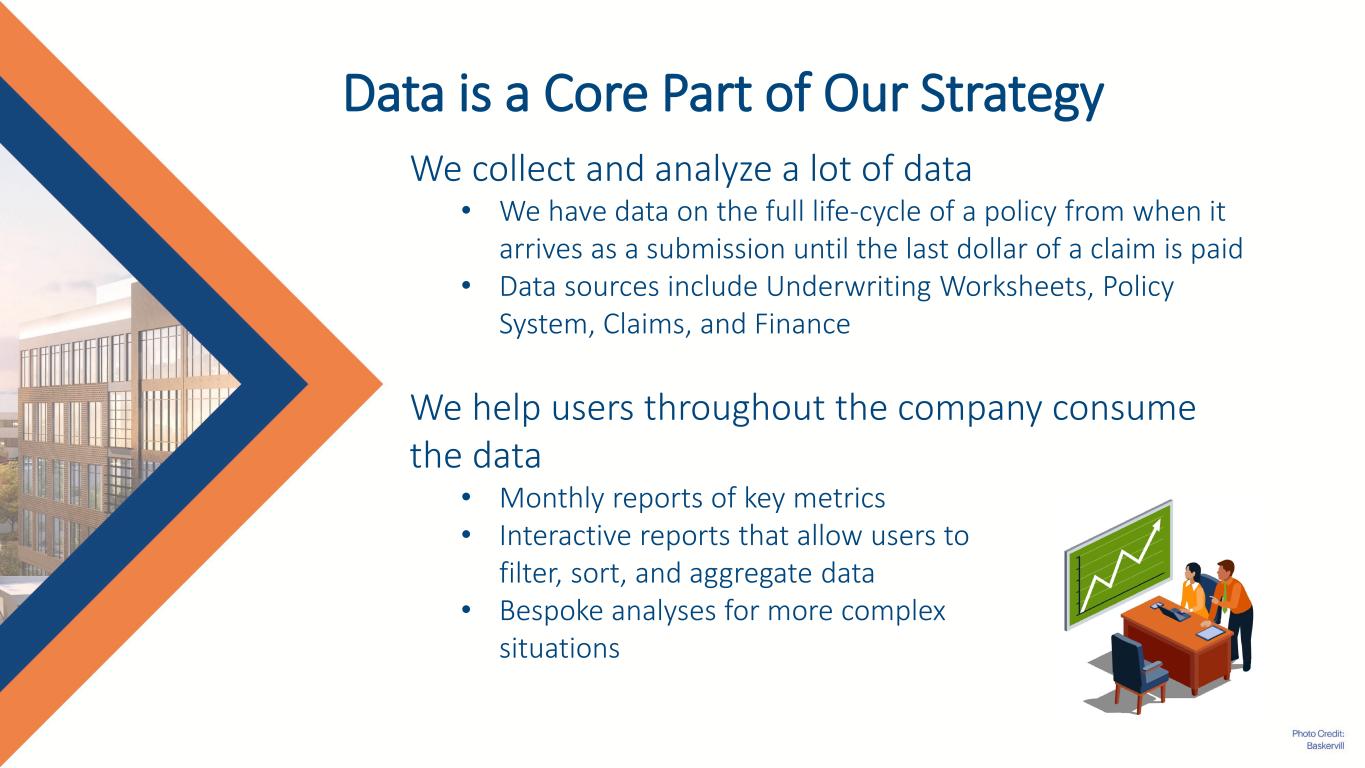
Data is a Core Part of Our Strategy We collect and analyze a lot of data • We have data on the full life-cycle of a policy from when it arrives as a submission until the last dollar of a claim is paid • Data sources include Underwriting Worksheets, Policy System, Claims, and Finance We help users throughout the company consume the data • Monthly reports of key metrics • Interactive reports that allow users to filter, sort, and aggregate data • Bespoke analyses for more complex situations
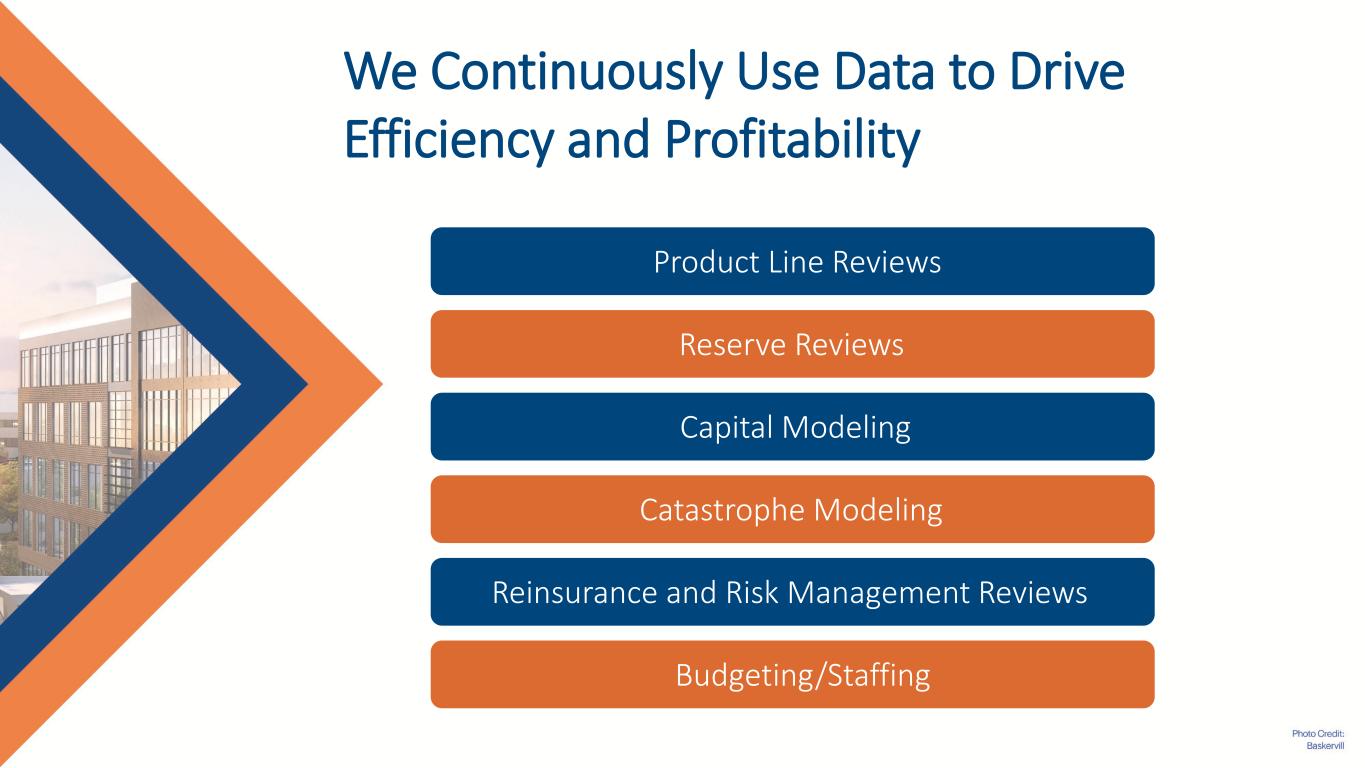
We Continuously Use Data to Drive Efficiency and Profitability Product Line Reviews Reserve Reviews Capital Modeling Catastrophe Modeling Reinsurance and Risk Management Reviews Budgeting/Staffing
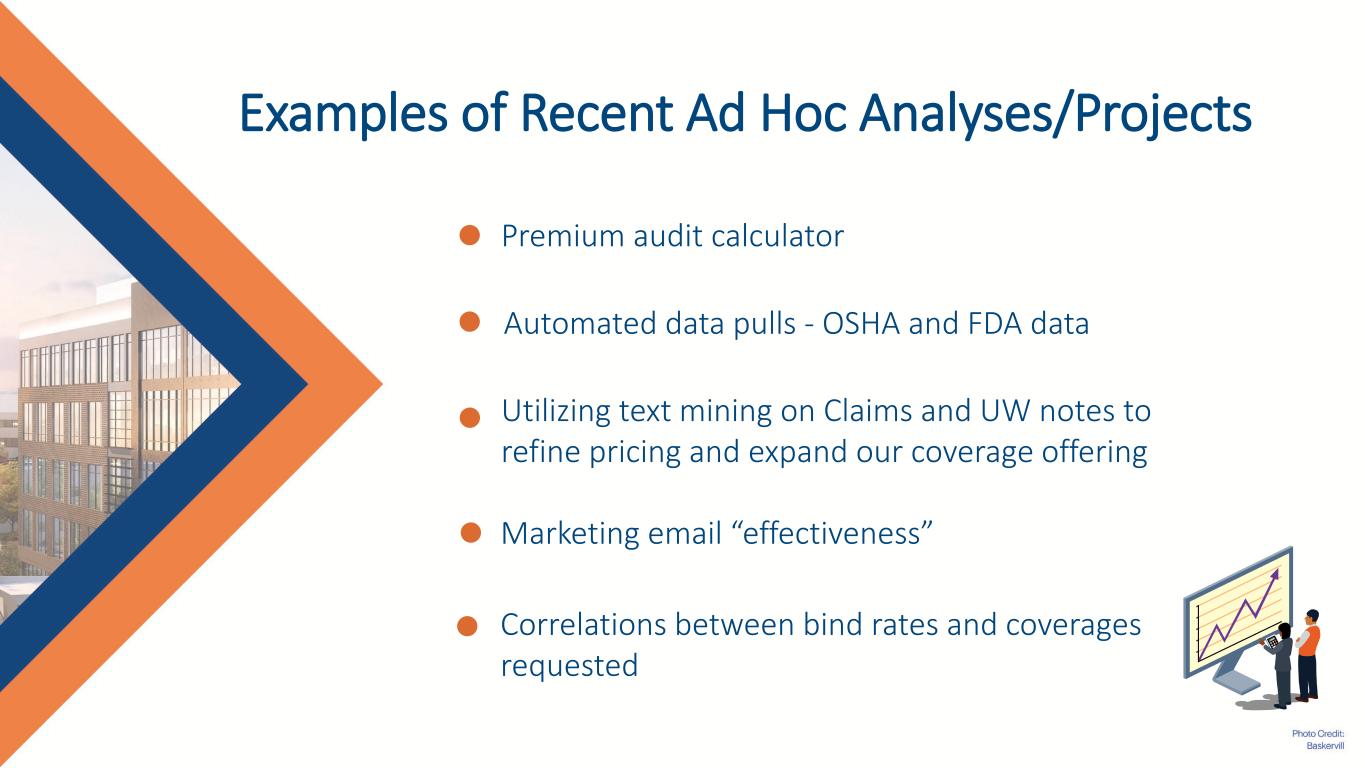
Examples of Recent Ad Hoc Analyses/Projects Premium audit calculator Automated data pulls - OSHA and FDA data Utilizing text mining on Claims and UW notes to refine pricing and expand our coverage offering Marketing email “effectiveness” Correlations between bind rates and coverages requested
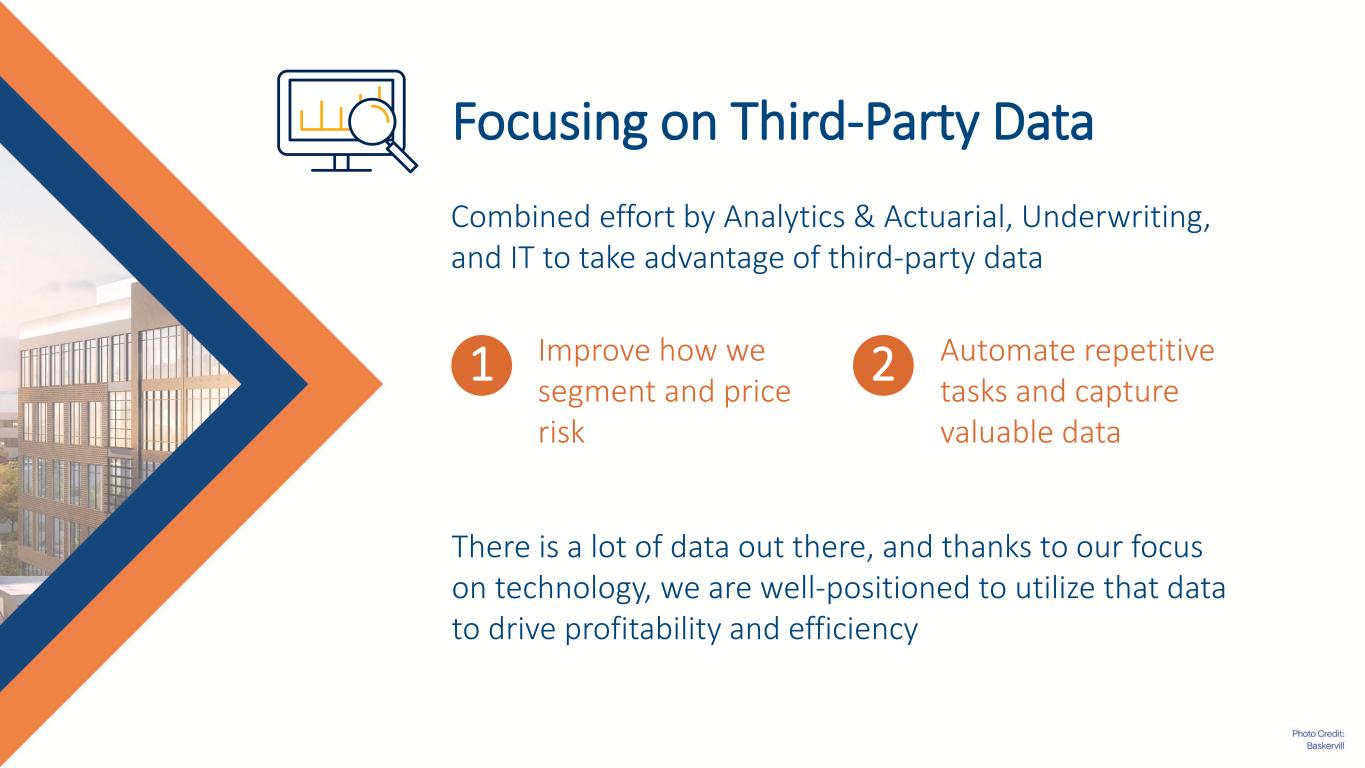
Focusing on Third-Party Data Combined effort by Analytics & Actuarial, Underwriting, and IT to take advantage of third-party data There is a lot of data out there, and thanks to our focus on technology, we are well-positioned to utilize that data to drive profitability and efficiency Improve how we segment and price risk Automate repetitive tasks and capture valuable data 1 2